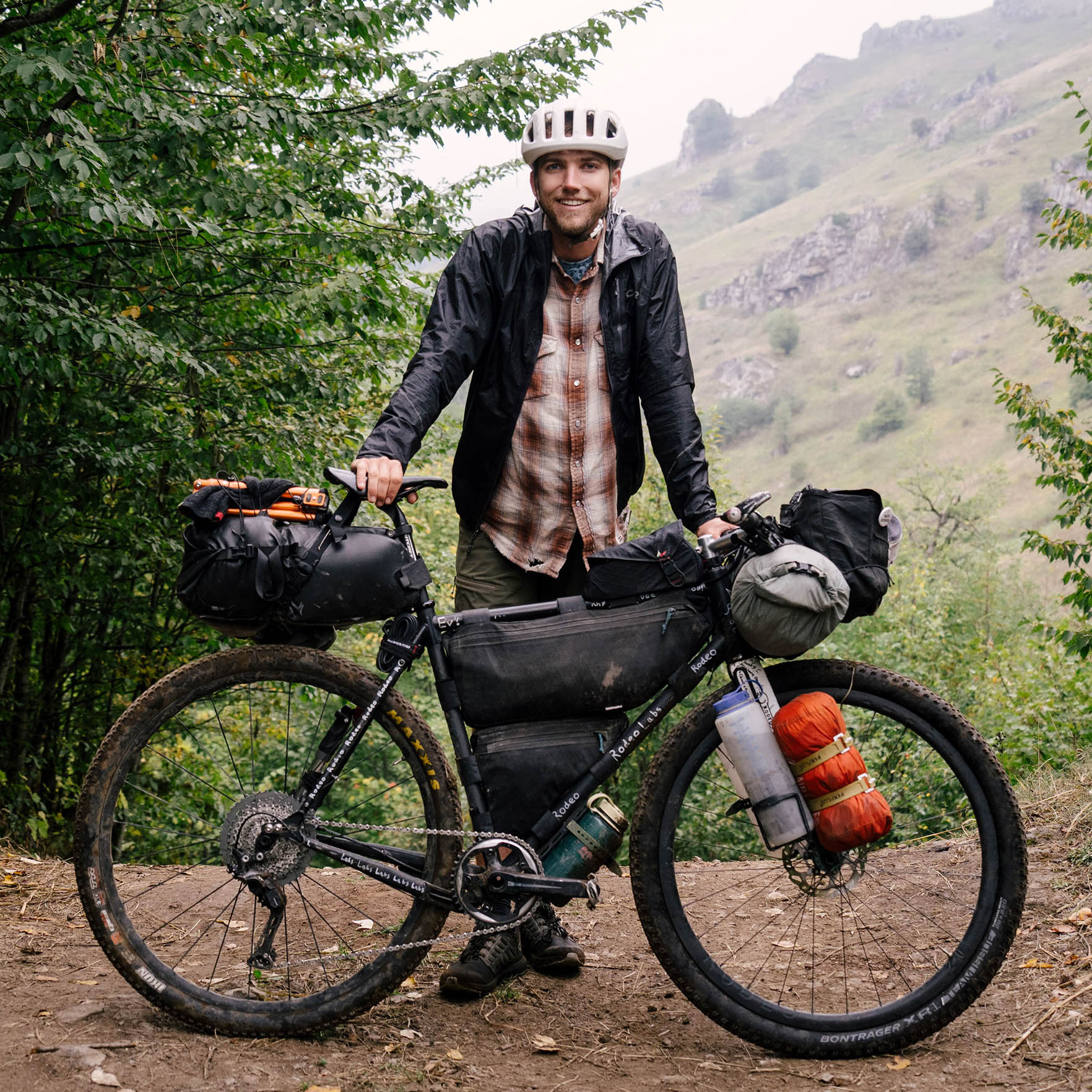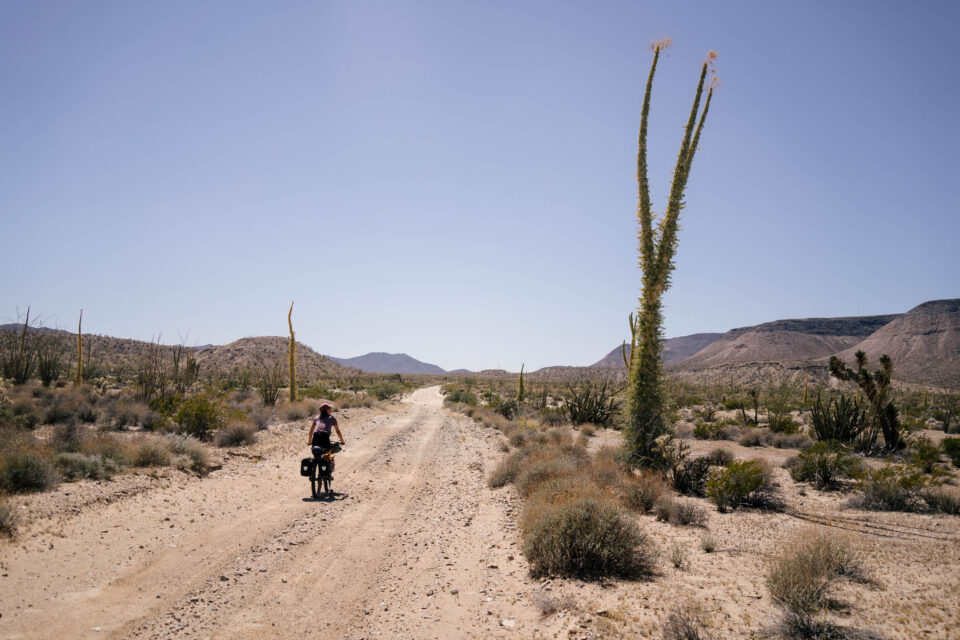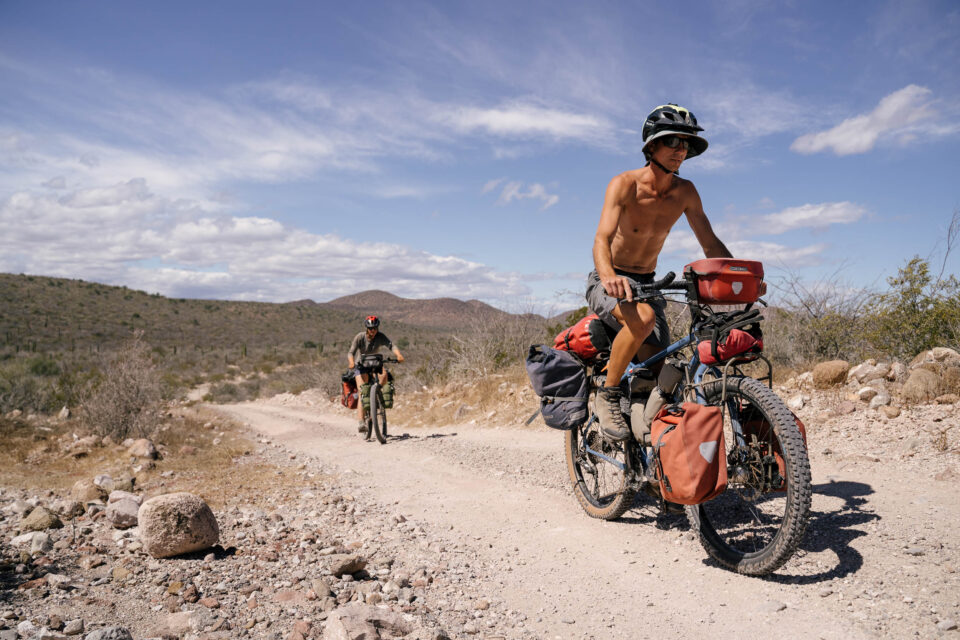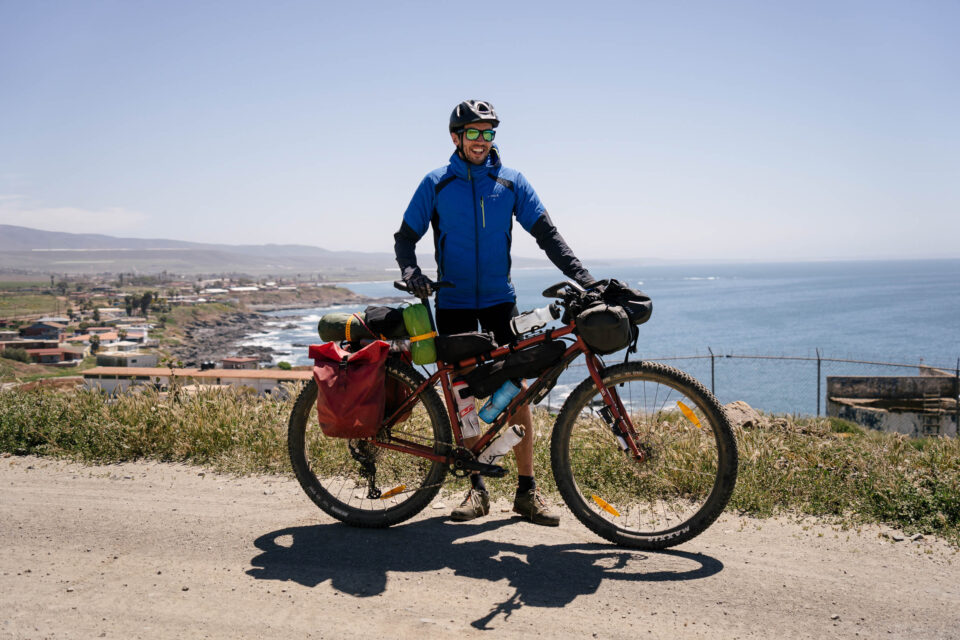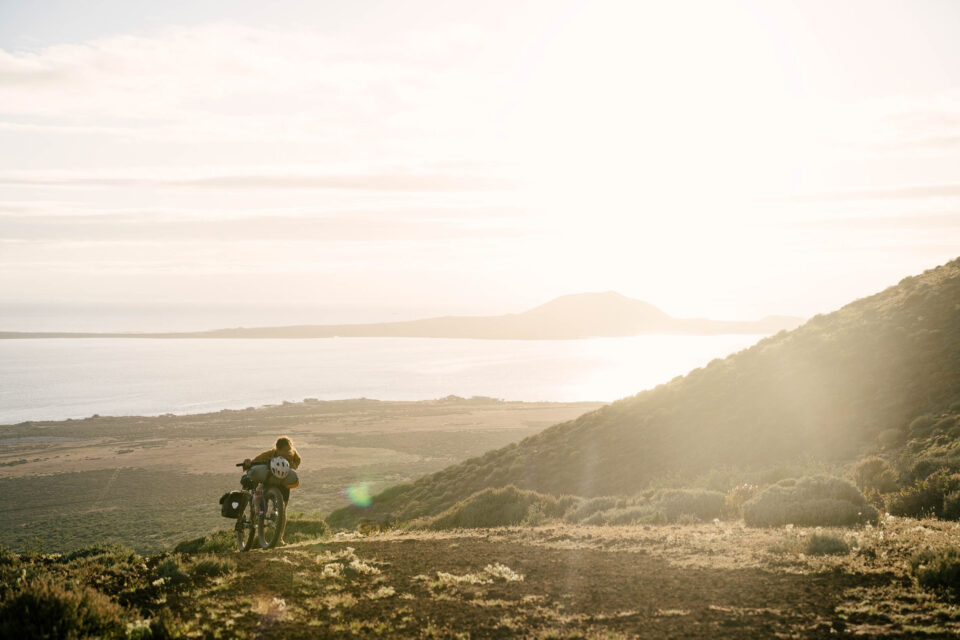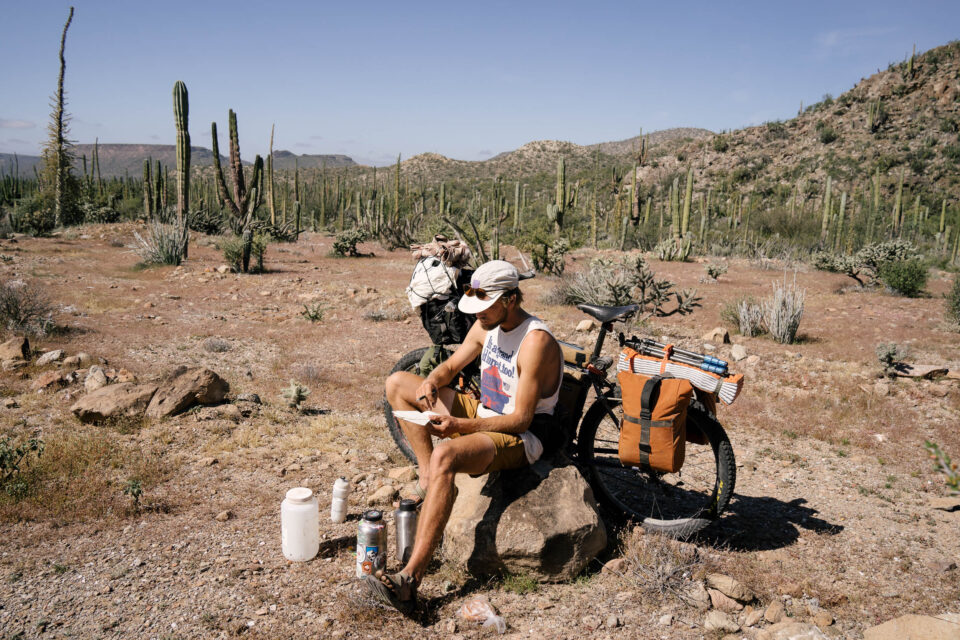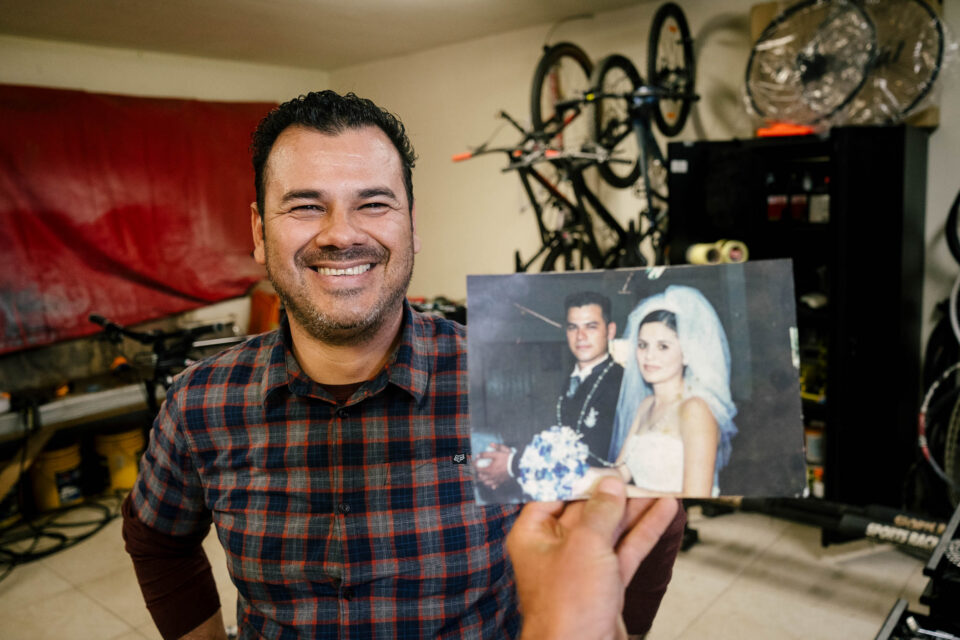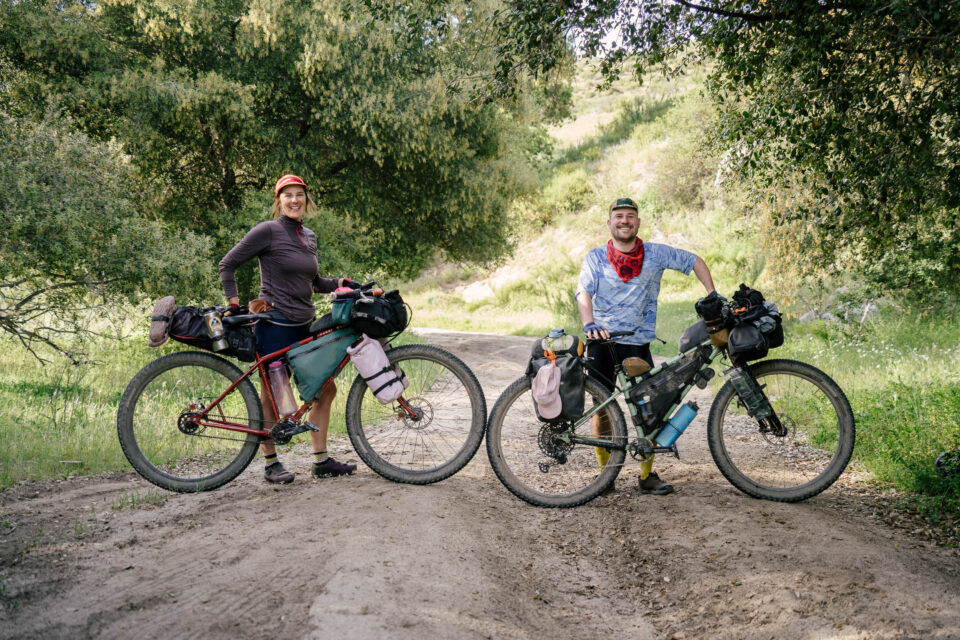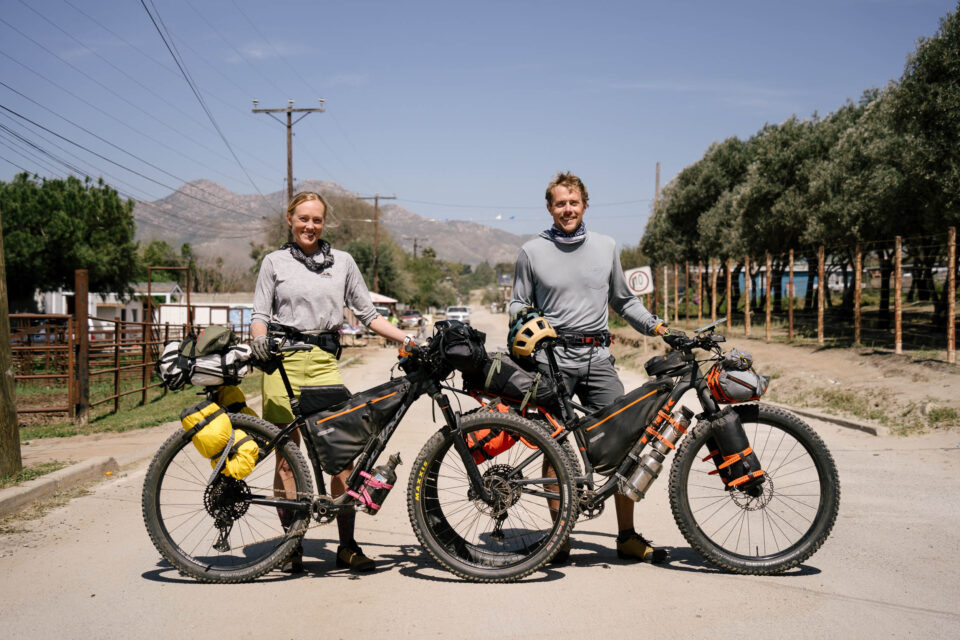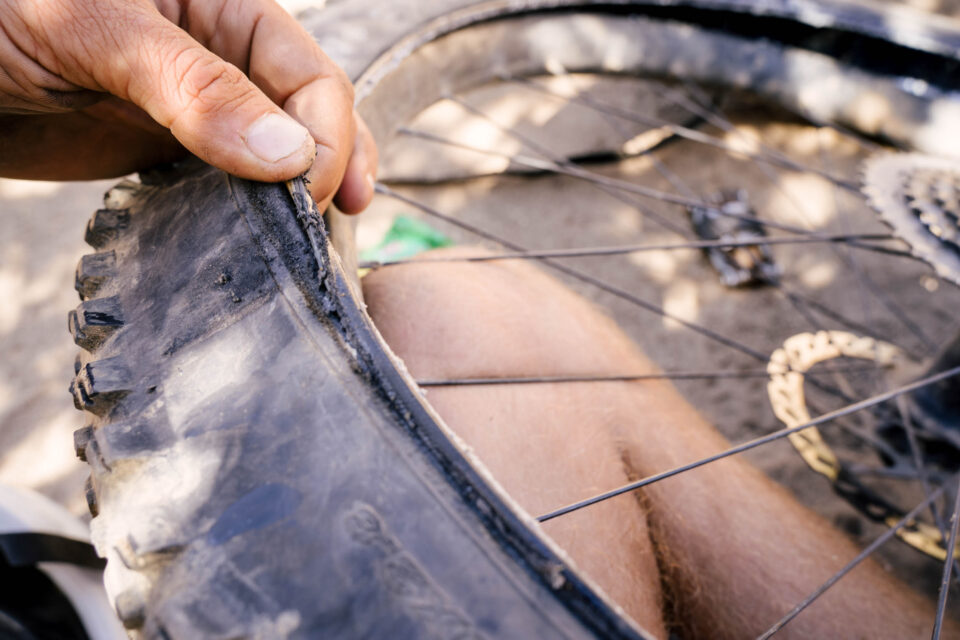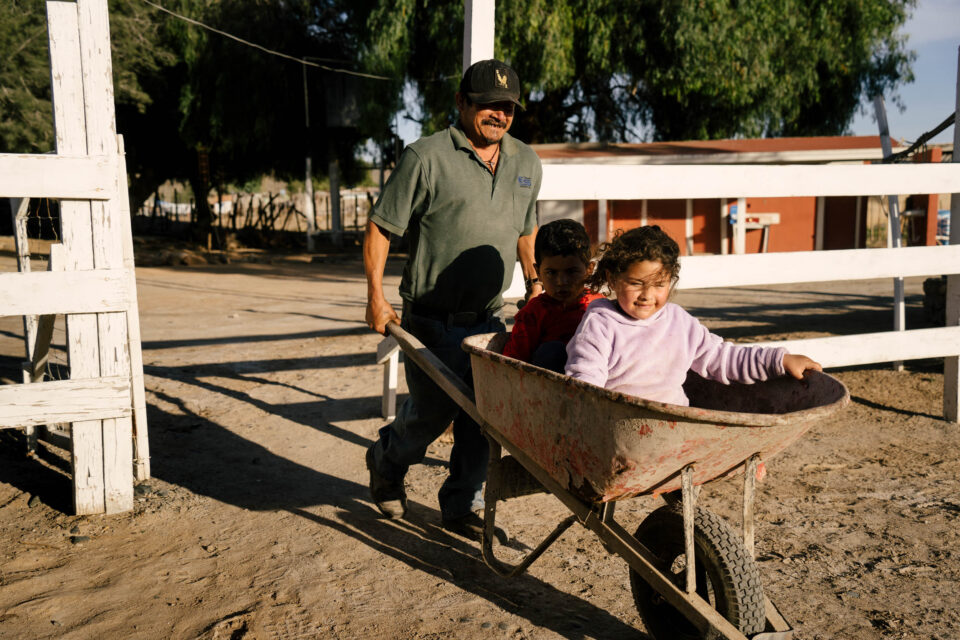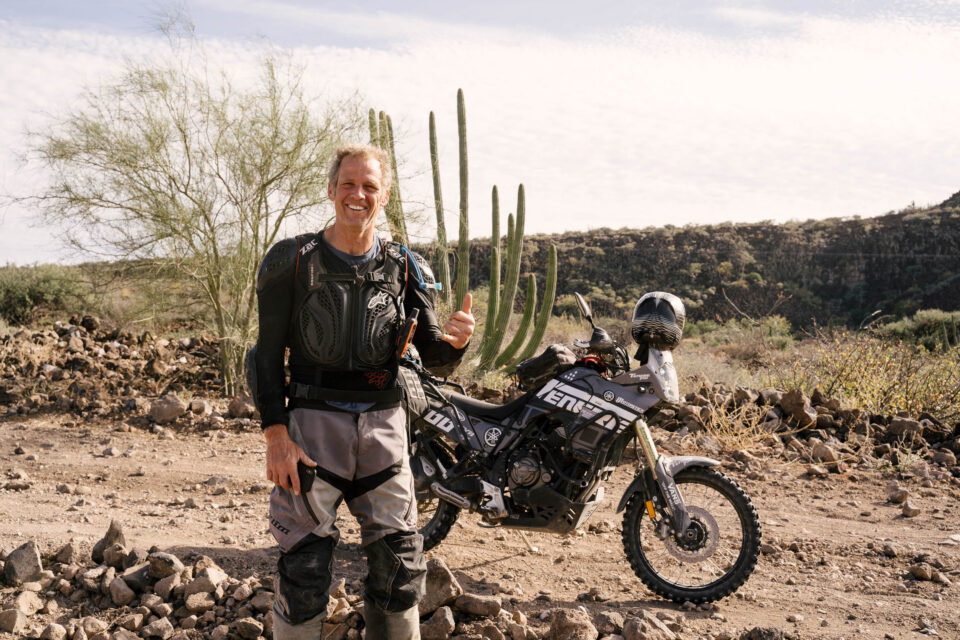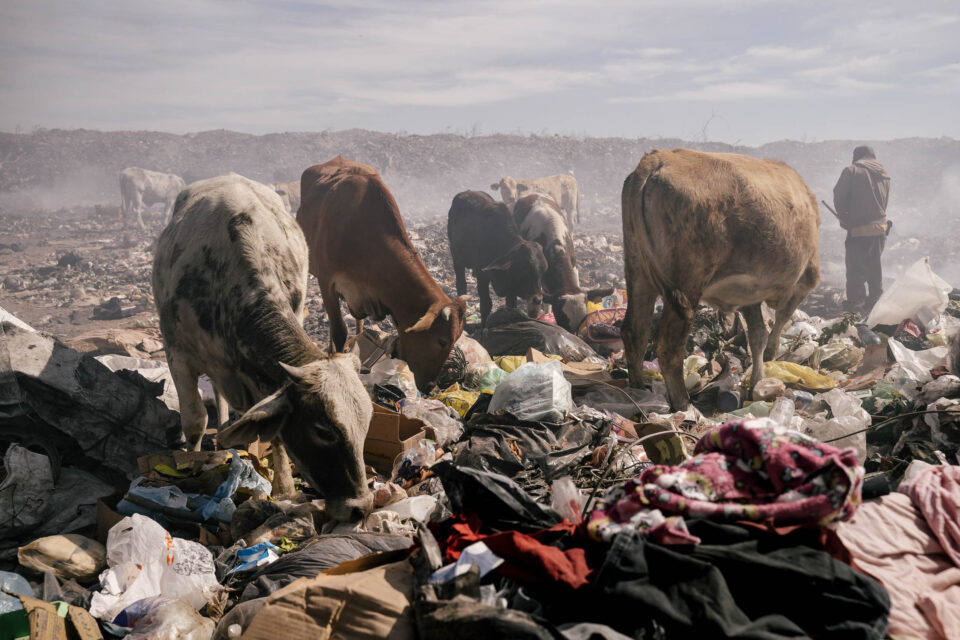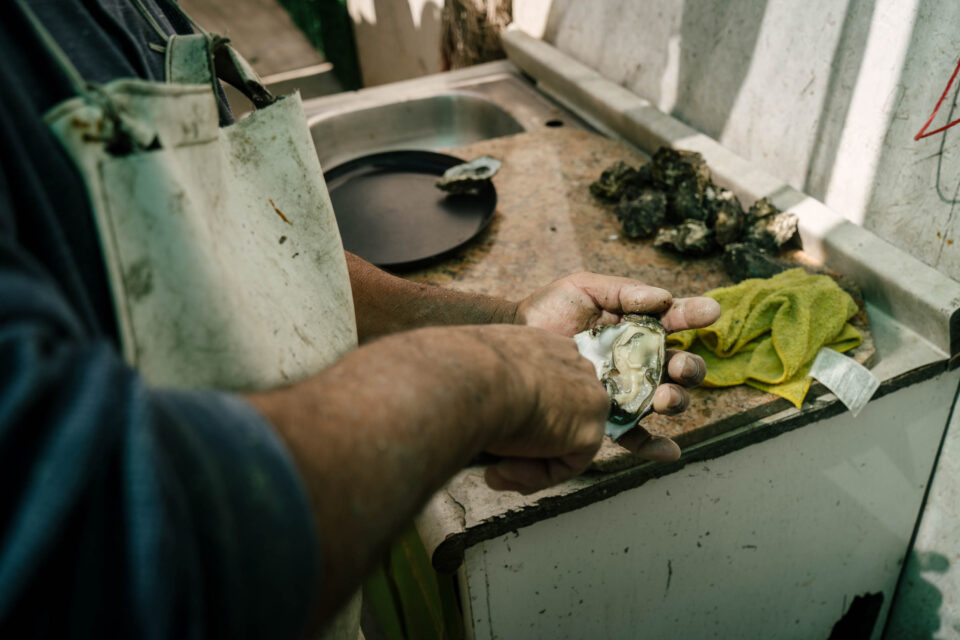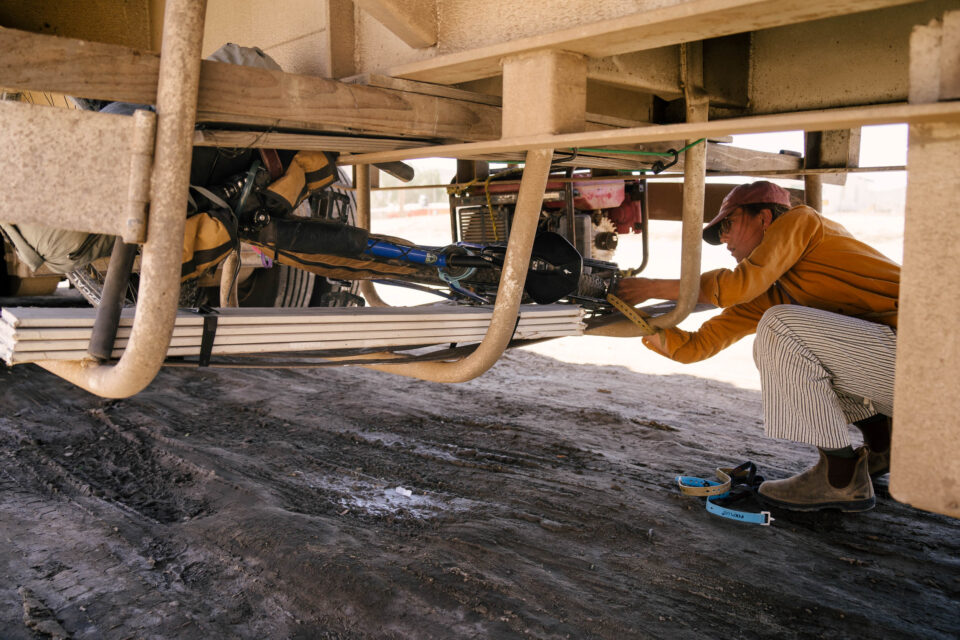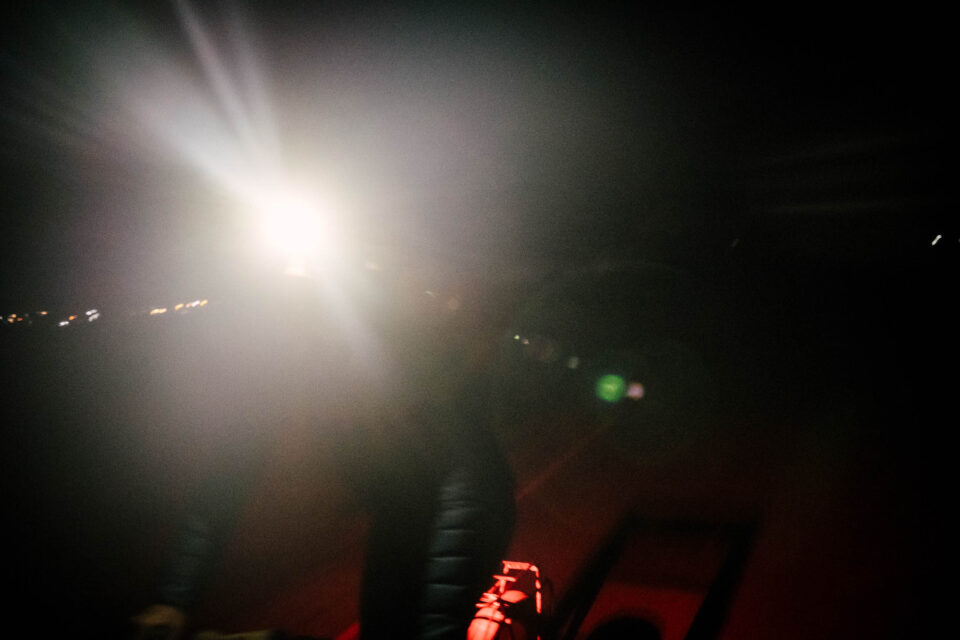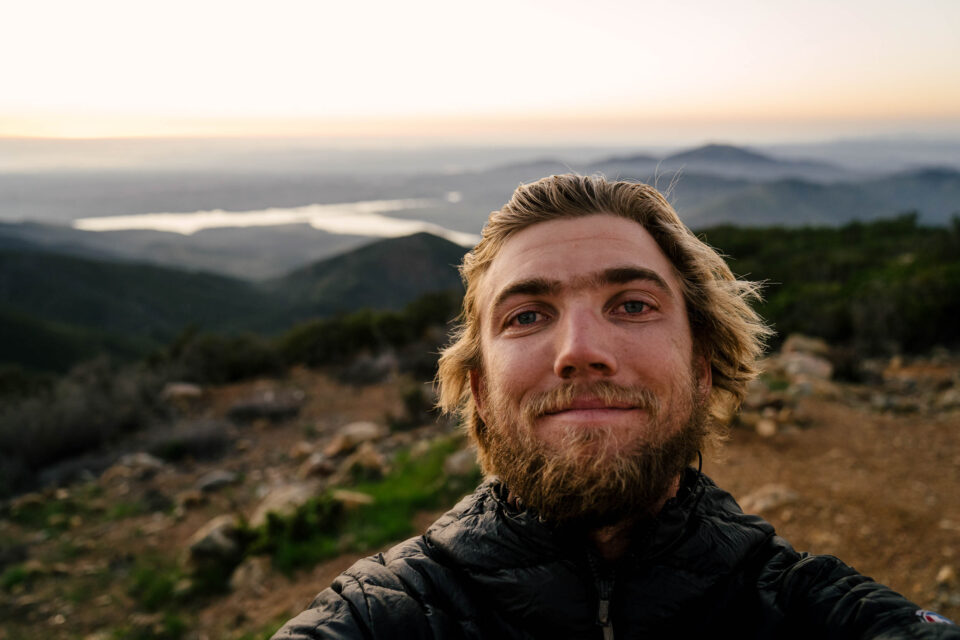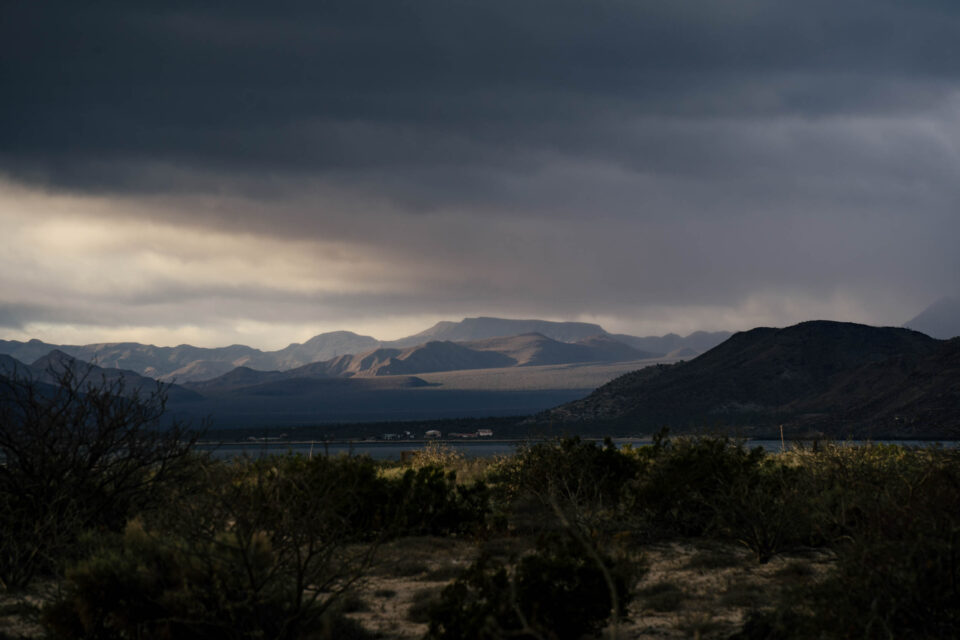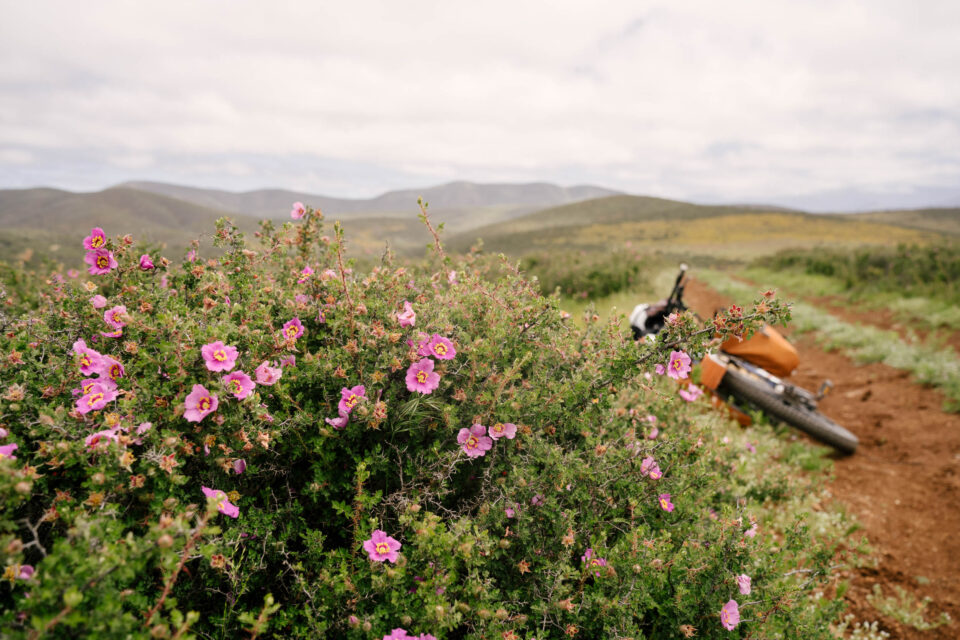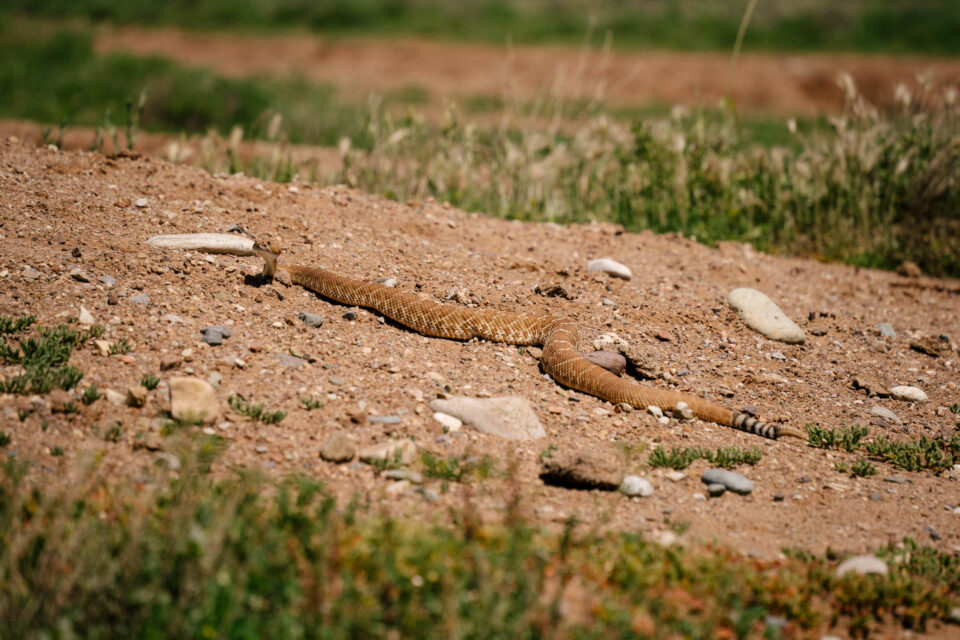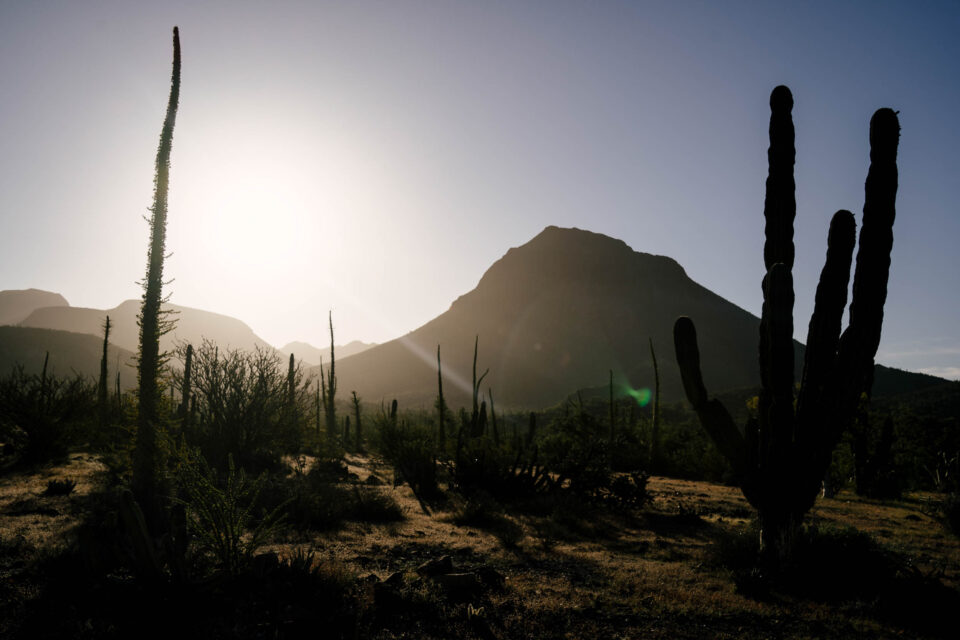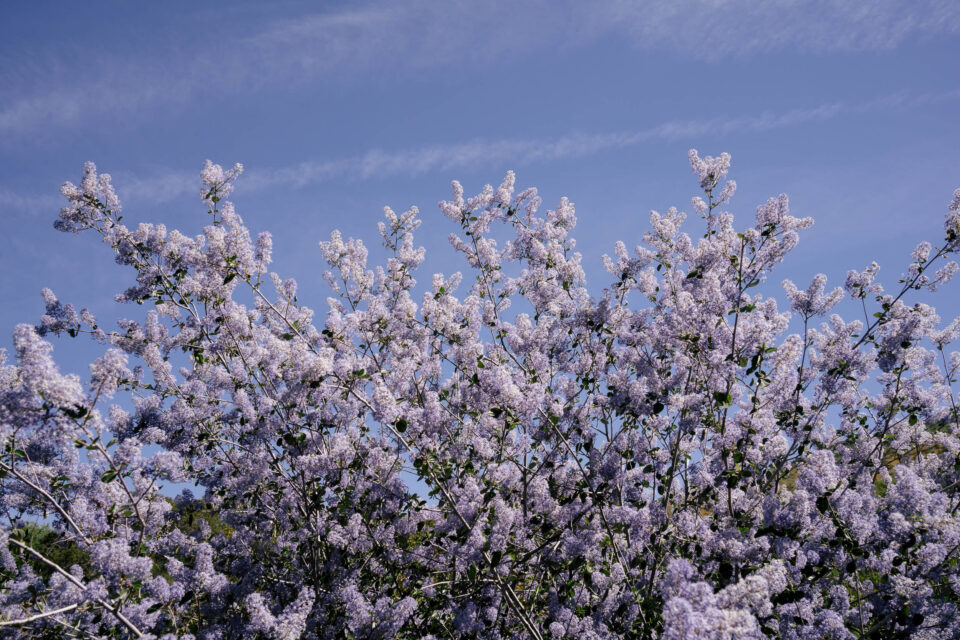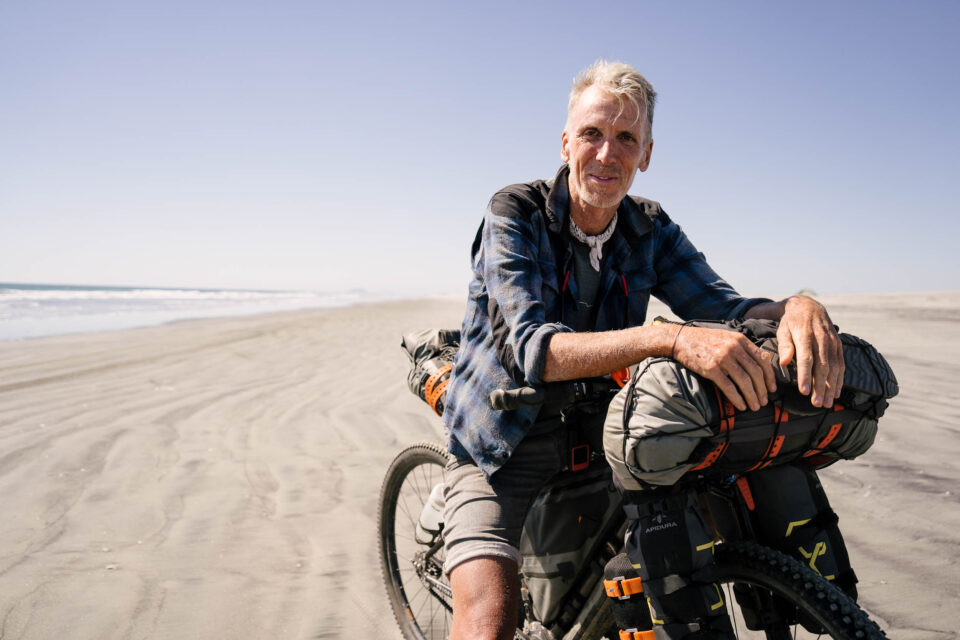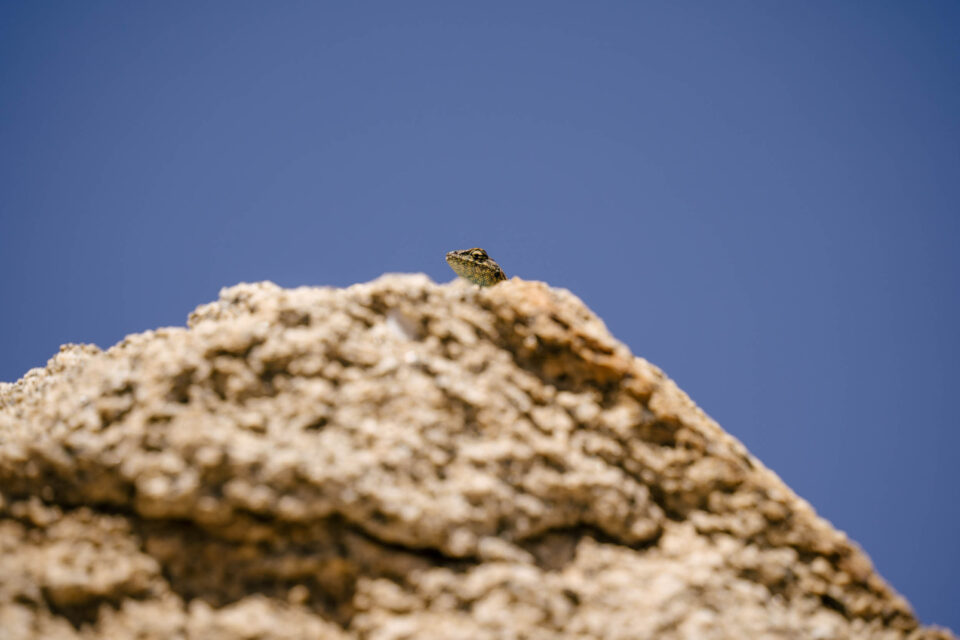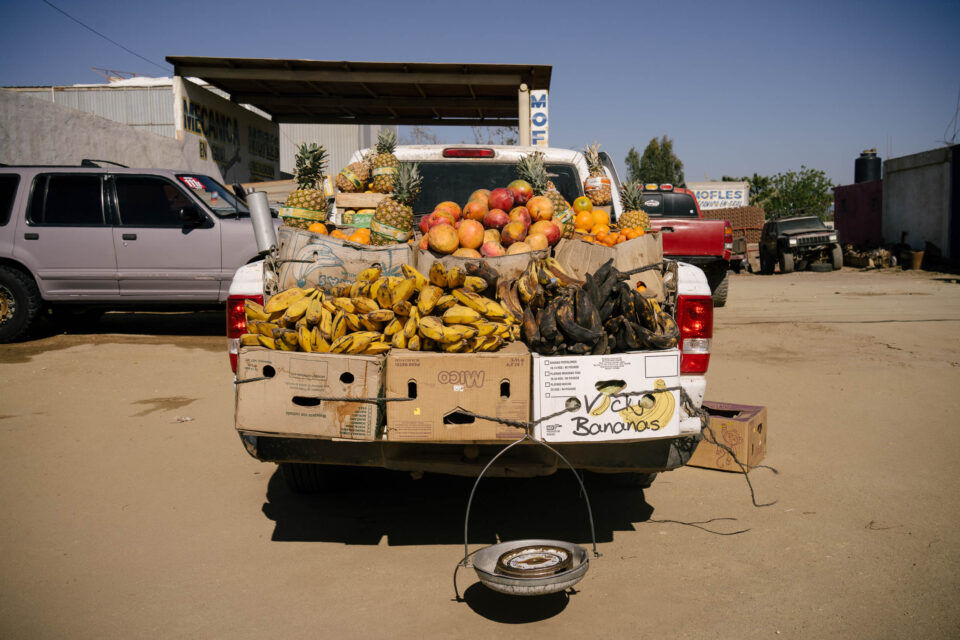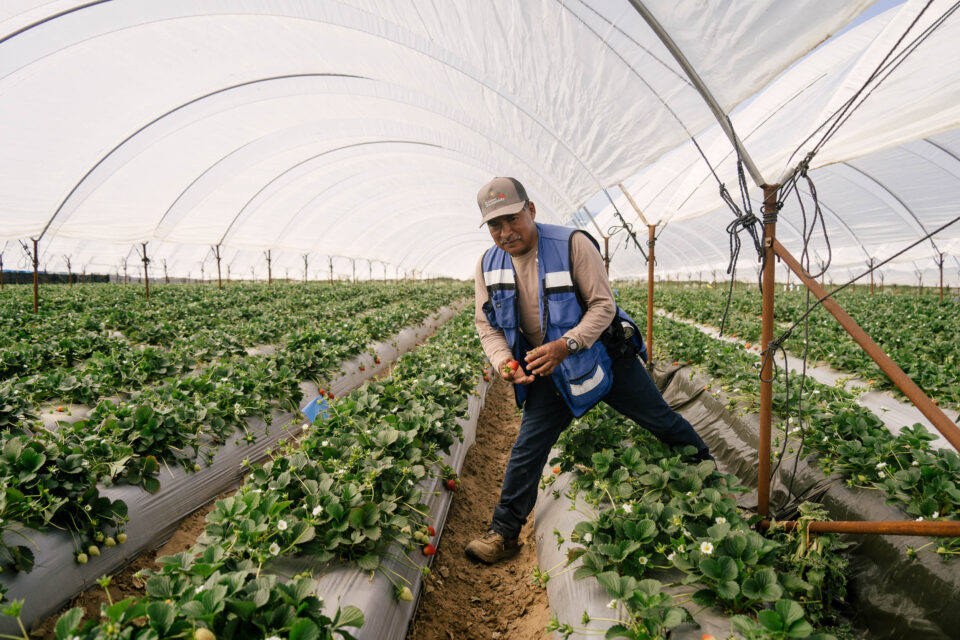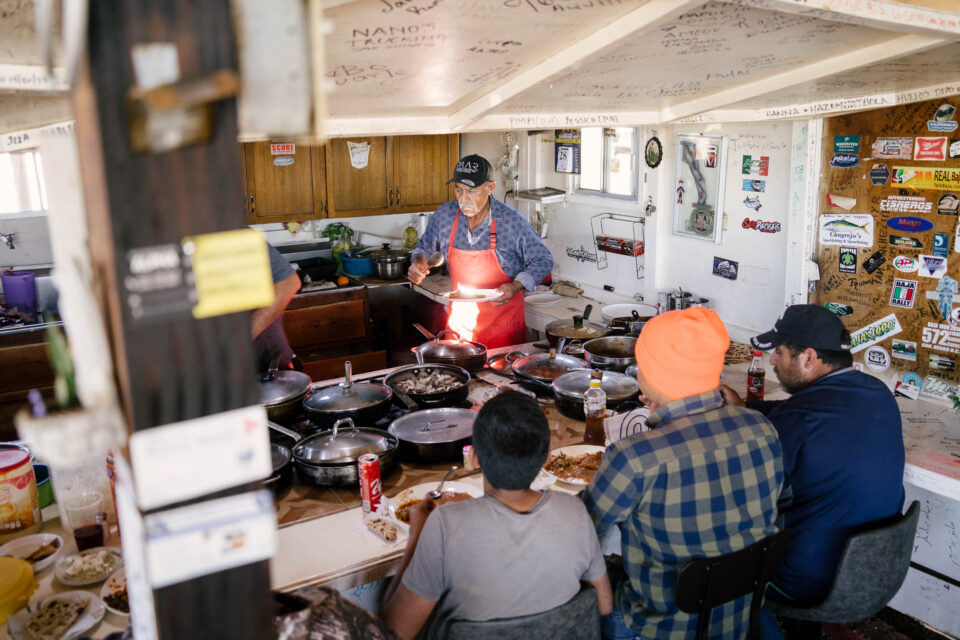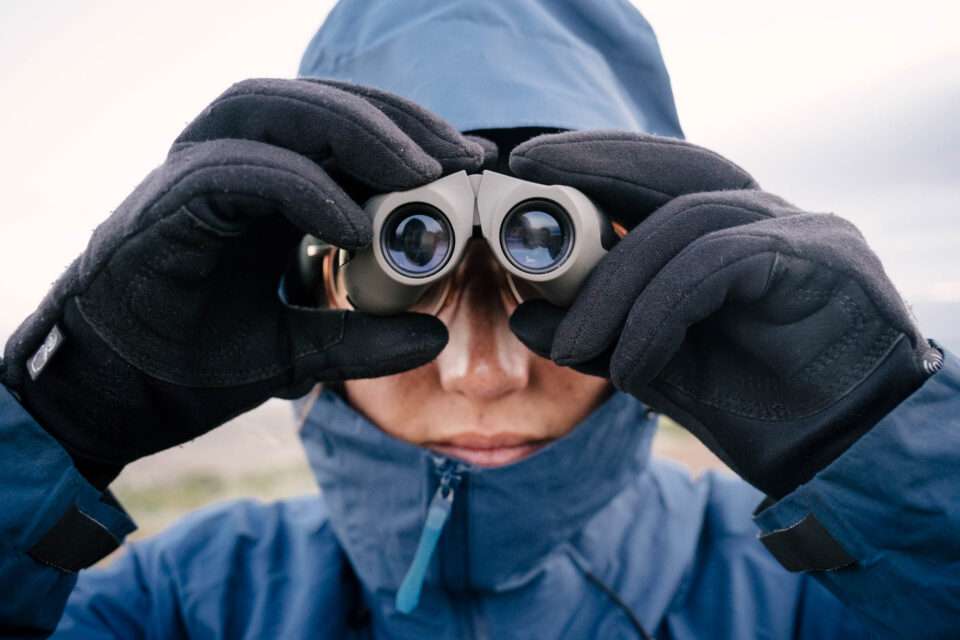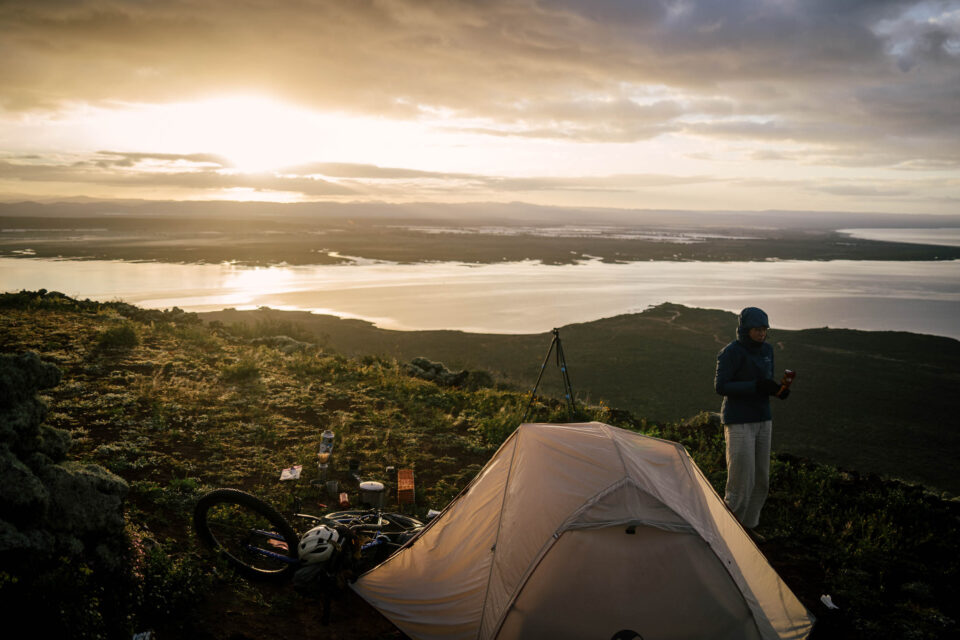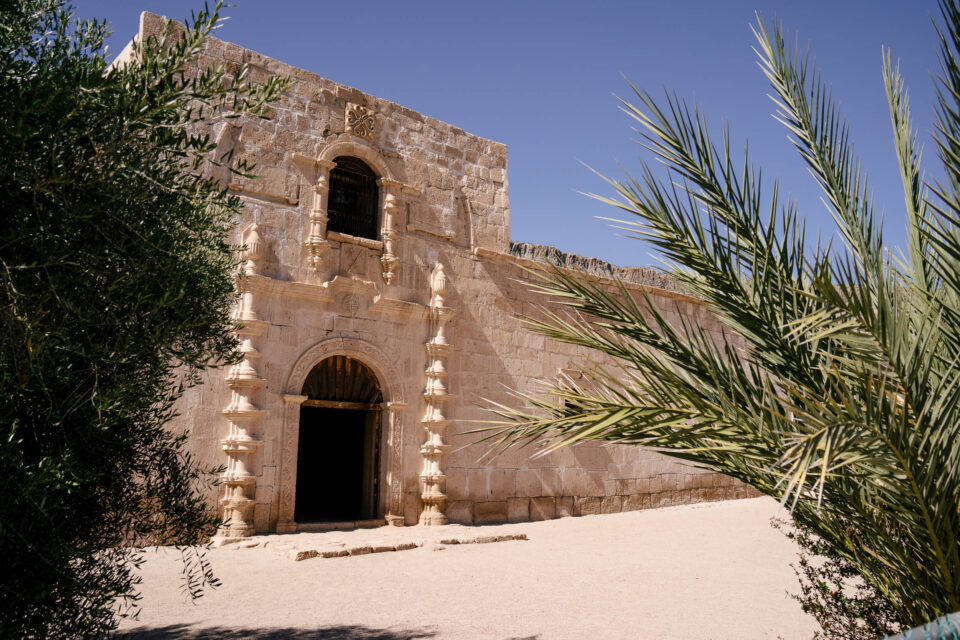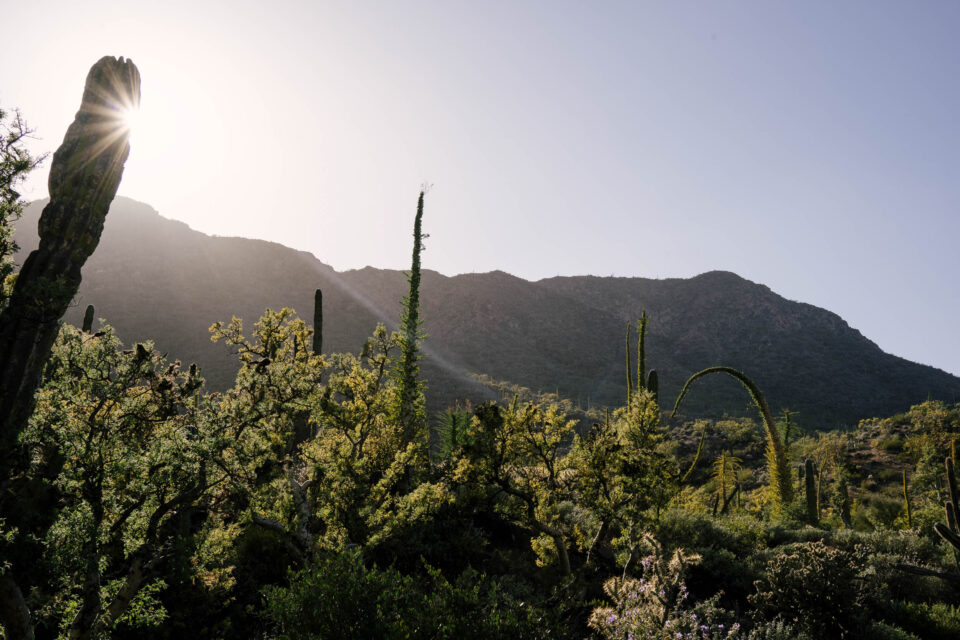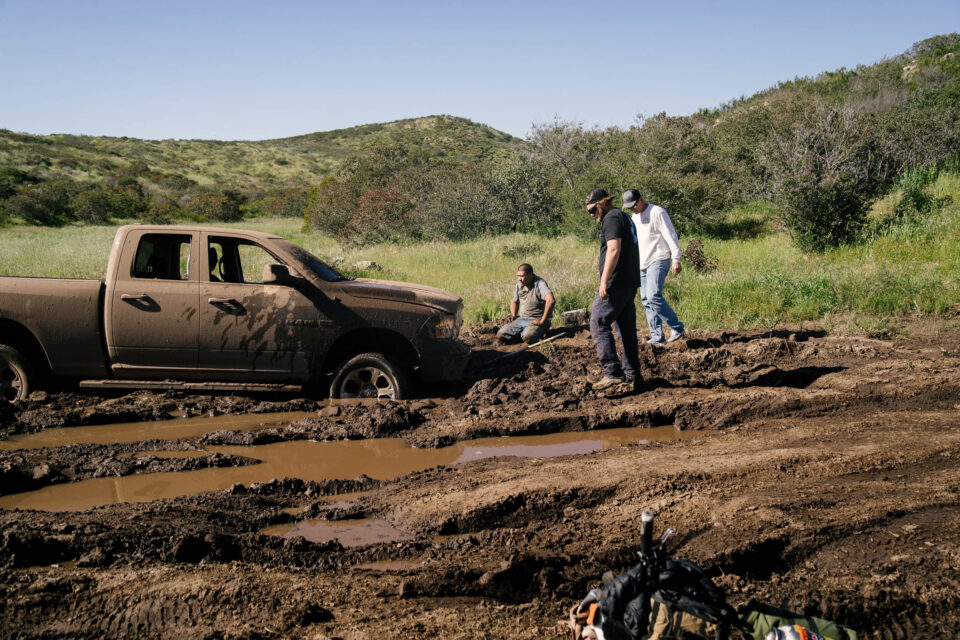Baja Divide Pt. 4: Tracing Lines
Share This
In his fourth and final report from the Baja Divide, Evan Christenson digs into some parting thoughts and reflections on the route and meets more locals and fellow bikepackers from across Mexico’s iconic Baja California peninsula. Join Evan in unpacking some of what he’s learned throughout his 1,700-mile journey, and find one last gallery of images here…
When I was a kid, we took a family cruise down to Cabo San Lucas together. We got off in the fancy part of town, and they handed us a map with a small orange line traced through it. The line looped through the central part of the city and matched the orange line they had painted on the ground. We were supposed to follow it and go shopping where it said and eat where it said, and if we did just that, we’d be safe. We walked around nervously for a few hours, our maps clutched in our sweaty hands, our cameras hanging from our necks, and we returned back to the protection of the cruise ship with our Cabo San Lucas nicknacks and our family photo, and we breathed a sigh of relief knowing that the line guided us through a safe passage into the scary world of Mexico.
Surely everyone on that cruise took the same photo in front of the big colorful sign, and we all ate the same overpriced tacos, and we all went home to tell the same stories. Fifteen years later, I still look down and follow the orange line, just a different one now. It meanders down the Baja California peninsula, shimmying from coast to coast and snaking into the mountains. And, 15 years later, I must wonder: Is the Baja Divide that same line? Is this really all that different? How liberating can it really be?
Route 66, the Disneyland park map, Google taking us home. We are all followers of these things, the human condition being obedience, and maybe the Divide is no different. Follow it if you want, and it will bring you places its creators deemed interesting. You can stray however you desire, but riders seldom do. As we head south, every turn is already decided. How much of an adventure can that really be?
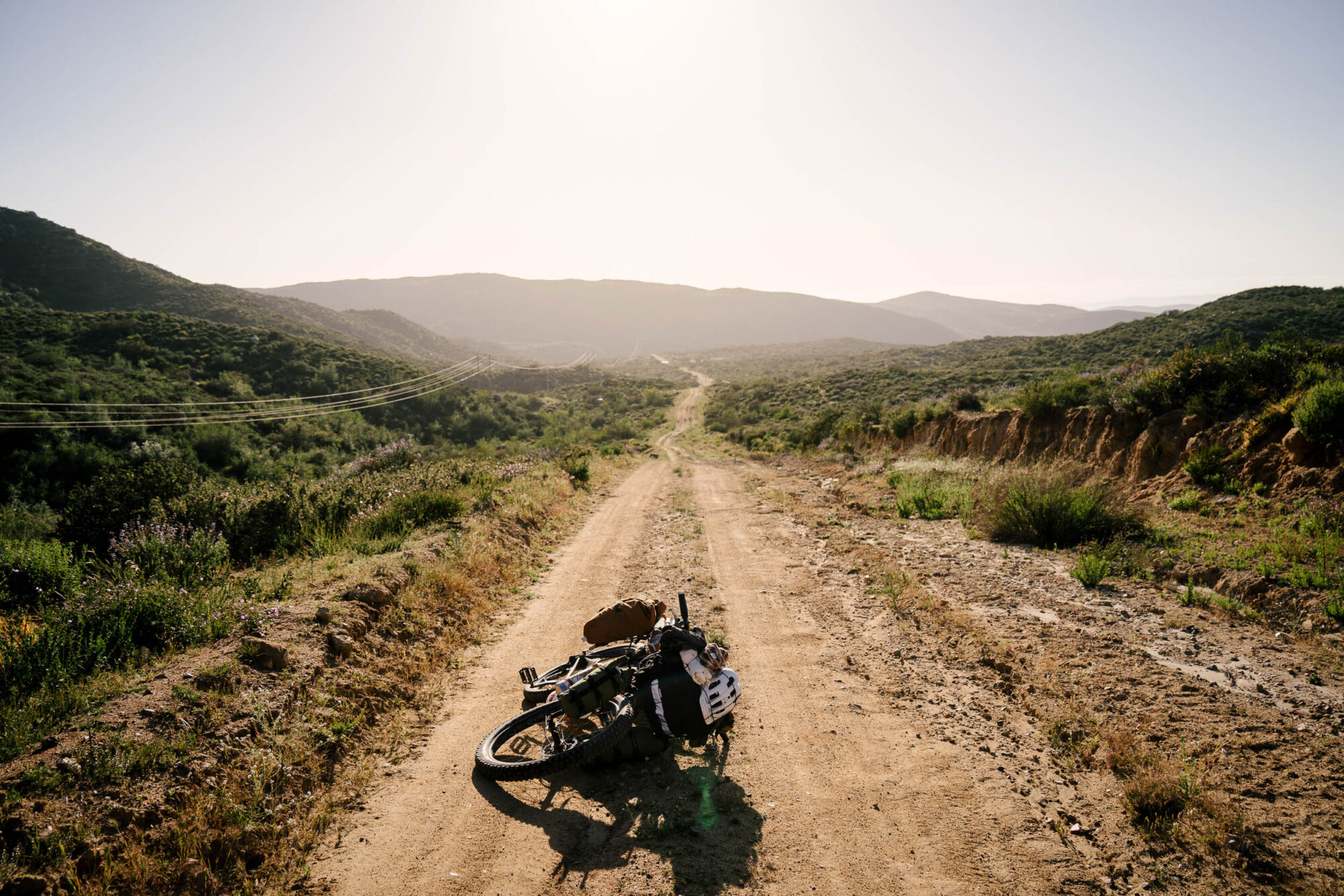
On my final night, just barely back into the United States, I sit high above the world, alone in my own perch, and I watch as everything before me disappears under the cold rush of the fog. High up, on the top of Otay Mountain, I look to my right and see the faint outlines of my neighborhood, a short stretch away from the first climb of the Baja Divide, and I can see its lights twinkle on and its shape still looking just the same as it did before this wild idea manifested itself.
To my left, I see the much darker mass of Mexico. I see it unfurling its dense roots into the distance, hurling itself south, mysterious in its twilight omniscience and incredible in its scope. Up here, straddled between these two places that feel so at odds, both within myself and to the whole world, I submit myself to the tears that must follow. The sun goes down one final time on this Baja Divide journey. And, somehow, it will never be the same.
For the southbound riders, Otay Mountain is the first chance to look beyond, to see the mountains roll into Mexico. From where I sit now, it’s my last look at the country I’ve fallen so deeply in love with. And it’s also my last look at the wall. Those bright lights and iron bars stand at attention and stretch out toward the sea. The wall serves as a reminder of the harsh division down the 31st parallel. From up here, it says to me, “This is for your own good.” Although, I’m not quite sure how true that is.
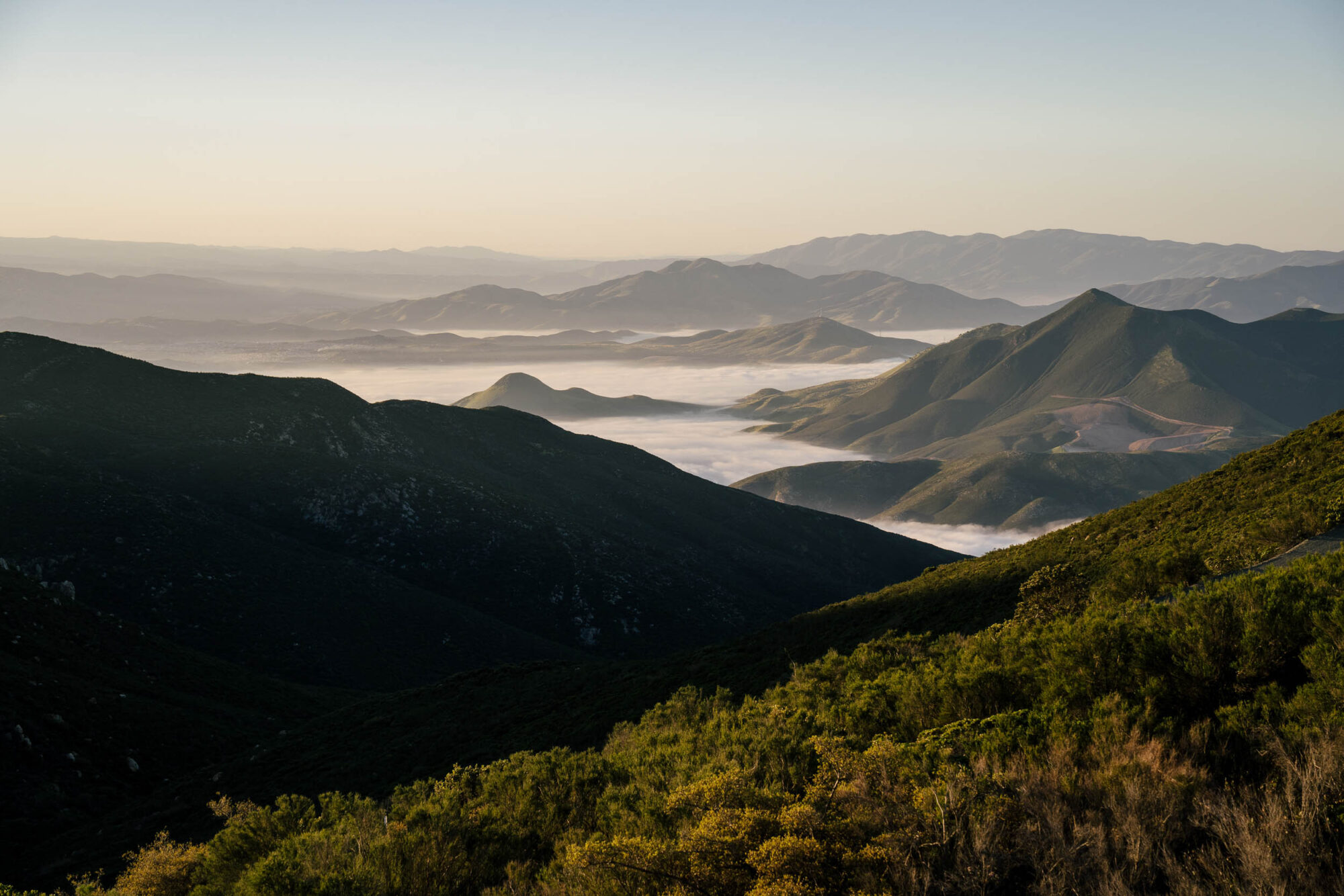
As southbound riders first crest Otay and look ahead, they must feel a wave of uncertainty. The mountains are huge. The canyon walls are steep. The Baja California peninsula stretches so far south that it might as well be another world. They must wonder, “And we’re just going to pedal all of that?” But, for me, it’s all memories now. I’ll roll down the mountain tomorrow and go home. The clouds will continue to build, and the dirt will run off my legs and down the drain.
The past few weeks on the Divide have been tough. I’ve seen only a few riders, my bike has continued to fall apart, the rattlesnakes are out, and my girlfriend had to leave. And, after three months of this, it’s been a long, harrowing journey. Pushing the bike off the coast and into the mountains behind La Paz feels like a distant memory as I leave the ocean behind one last time. I look west once more to keep it in my memory. The ocean has served as an emotional anchor throughout this ride, juxtaposing those long desert rambles and pulling me back in as the route allows. By now, the ruts of my mind are deep, and the tires slot in one more time.

My role has changed here. As I’ve gotten further north, I am no longer the one to sit and listen to the rider’s stories. I’m the one to give beta, to tell them how the road across the peninsula in the south is, what’s going on with the gate issue, and where to camp tonight. One rider looks on in awe as I put bagged beans on tortillas, and he says he’s never seen that before. Riders in the north don’t do the same pouring of funny stories, eager for any English speaker with ears to listen to them. To riders in the north, the salt flats are a dream. They shimmer like a mirage. With some 1,500 miles to go, the Baja Divide is still mostly in their heads and not yet lived.
I meet Chad as we both enter Uruapan. He’s wearing a yellow reflector vest and big glasses. He’s hard to miss as we both lazily roll along the main road in town. Chad’s face is swollen. The blood is dry now, and his black eye pokes through the cracks. He crashed last night while riding alone through the mountains in the dark. His derailleur is broken, and he’s missing a spoke. We sit down to eat, and he lets out a big sigh in the chair. Chad doesn’t know how far he’ll make it. At this point, he’s only five days in. But he says even to have gotten here, just to be able to get to the start, is a blessing. Every day south of that is just icing on his cake.
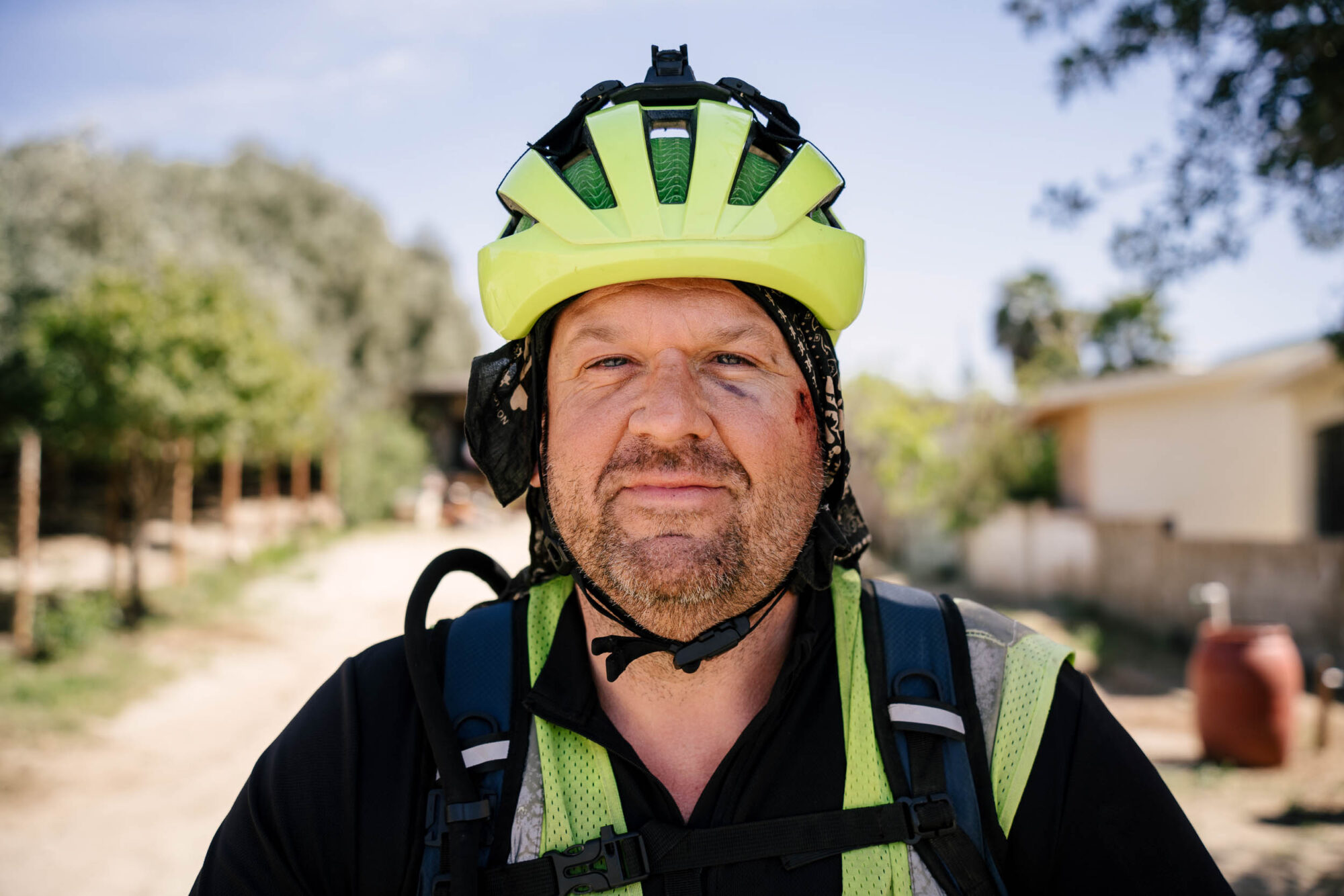
As Chad and I are sitting there, Jeremiah and his partner Katryn show up. They’re only two days in and fresh and clean and excited after their first two days of bikepacking. What comes next for them, they’re not sure. Jeremiah is used to this feeling, though. He’s sailed around the world dozens of times. He’s seen every ocean. He knows the unknown, even openly embracing it. He’s come here on bike, via what he calls “the land equivalent of sailing,” to travel in a new way. He says aboard a boat, after months at sea and far from land, he just misses dirt. By now, he knows the depths of his mind, but he doesn’t know what lies ahead for him and his partner.
The couple and Chad all roll out, and I watch them as they turn the corner and head for the highway. This journey is a hard one to start. The first day is a 4,000-foot climb, and the highest point on the route is within the first week. The mud is still lingering too. Chad isn’t new to bikepacking, but this is his biggest ride yet. What will they take away from this peninsula? And what will it take from them?
I ride on, and I think of how this line I’ve traced has intersected so many times with the random lines of those just going about their days. And as this all starts to come to a close, those intersections are the thing I look back on and value the most. How the Mexicans on the roadside see us pass by like small dots rolling in the distance, on our path, rolling along like we’re lonely satellites arcing across a clear night sky.
When I rode through the dump, I turned off and down the side road into where everyone works. And as I rode off the route, a man with a bag of cans clunking over his shoulder and soot layered on his face waved me back to the route, knowing that I wasn’t where I was supposed to be. And in that small gesture, that rolling of the eyes and the flicking of his fingers, I saw how normalized we’ve all become by now. I talked with another guy in the dump for a while, slumping away from the plumes of smoking tires and shocked at the cows eating trash just in front of me, and Pedro just carried on. He said no one pays attention to the cyclists anymore, but at first, they were really concerned for us. And, he said, working there, it’s not a pretty job, but the pay is decent. Searching for metal to recycle in the dump we all panic to get through is a good life for some people. They all can afford cars and pay rent as long as the trash keeps coming in.
Pedro was deported from the US about 10 years ago and works at the dump more as a manager than a digger himself. He knows everyone, tending to their needs, bringing them food and water, and shuttling them to the recycling plant just down the road. I looked around at the rotting food, the old plastic bags, the broken glass, and the rusty nails. “This is where capitalism comes to die,” I told him, and Pedro just laughed. He makes a decent living from all this scrap. He sends his own down here to be sifted through too. Maybe it never dies after all.
I think back to my time living on the ranch, too, this other chunk of time the Divide gave me. With Juan, I was able to sit inside this lifestyle that felt so foreign to our new worlds back home. He lives without internet or cell service, hunting for his meat, culling his land for sustenance, deep in one of those remote canyons and intimately connected to it. He showed me a bag of arrowheads he had found while walking and the row of metate stones too. He could read a snake track like a book: what type of snake, when it was there, where it was going. He laughed heartily and smiled big and made silly jokes, and I saw him fight back tears as we hugged each other goodbye.
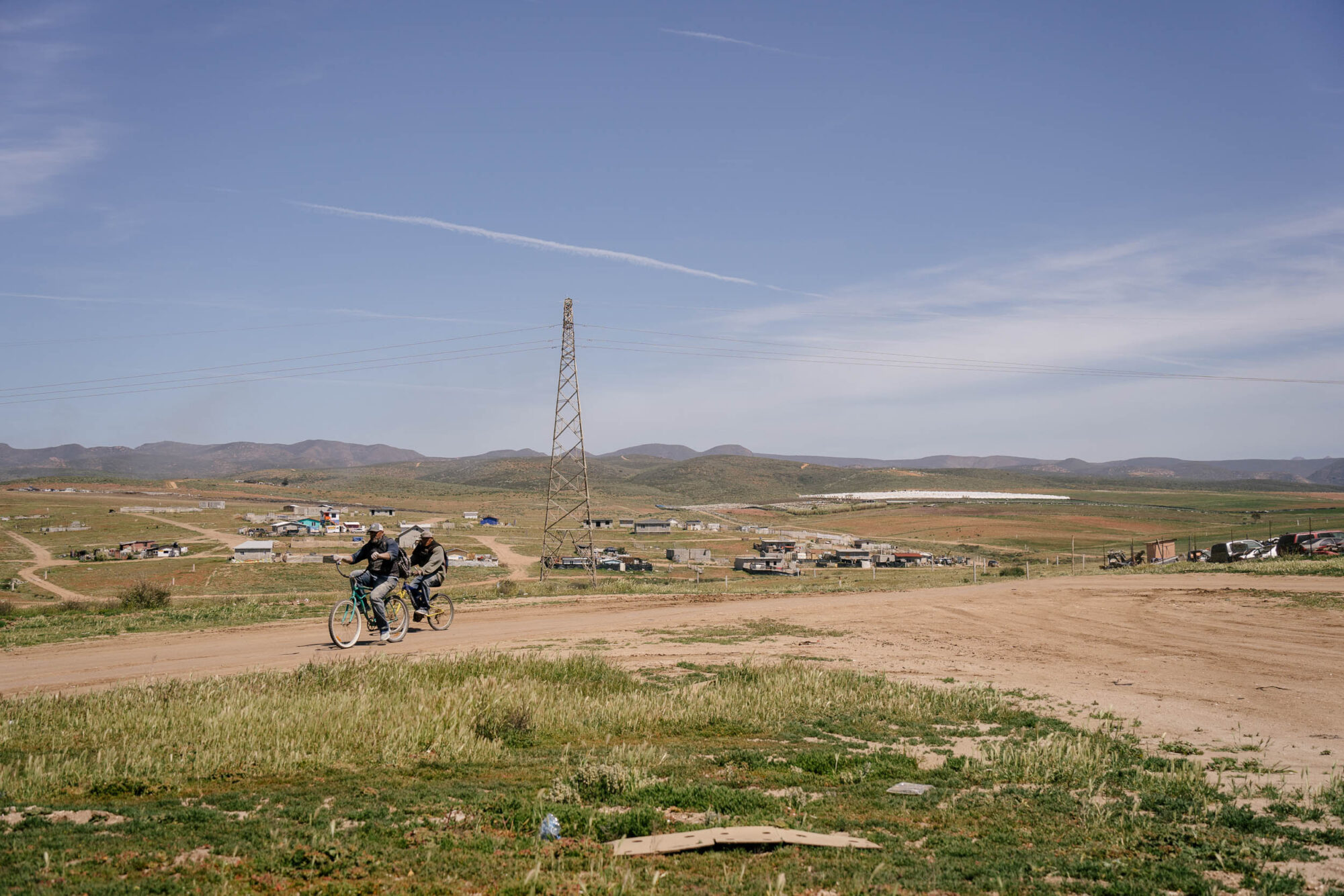
One night around the fire, Juan asked me why I could come down here, but he wasn’t allowed up into the States. I choked on my words as I stumbled through a pathetic response. I didn’t really know why, and I still don’t. With Juan, I first saw an animal go from alive in an idyllic valley, elegant and strong, to limp and lifeless, to cut open and ripped apart, to the grill, and to our plates. And gross as it was, that was a deeply profound experience. It’s something I felt the responsibility to do as a person still making the conscious decision to occasionally eat meat. The same with Jorge, the fisherman I’m still exchanging long voice messages with. I ate those fish we wrangled out of the boat together. And those beautiful fish are what gave me the energy to ride this route, take these photos, and ruminate on these thoughts. Is it all worth it? Ultimately, I’m not sure. But I feel more responsible in making that choice now. Nobody in my family hunts, and so only through them was I first able to experience it.
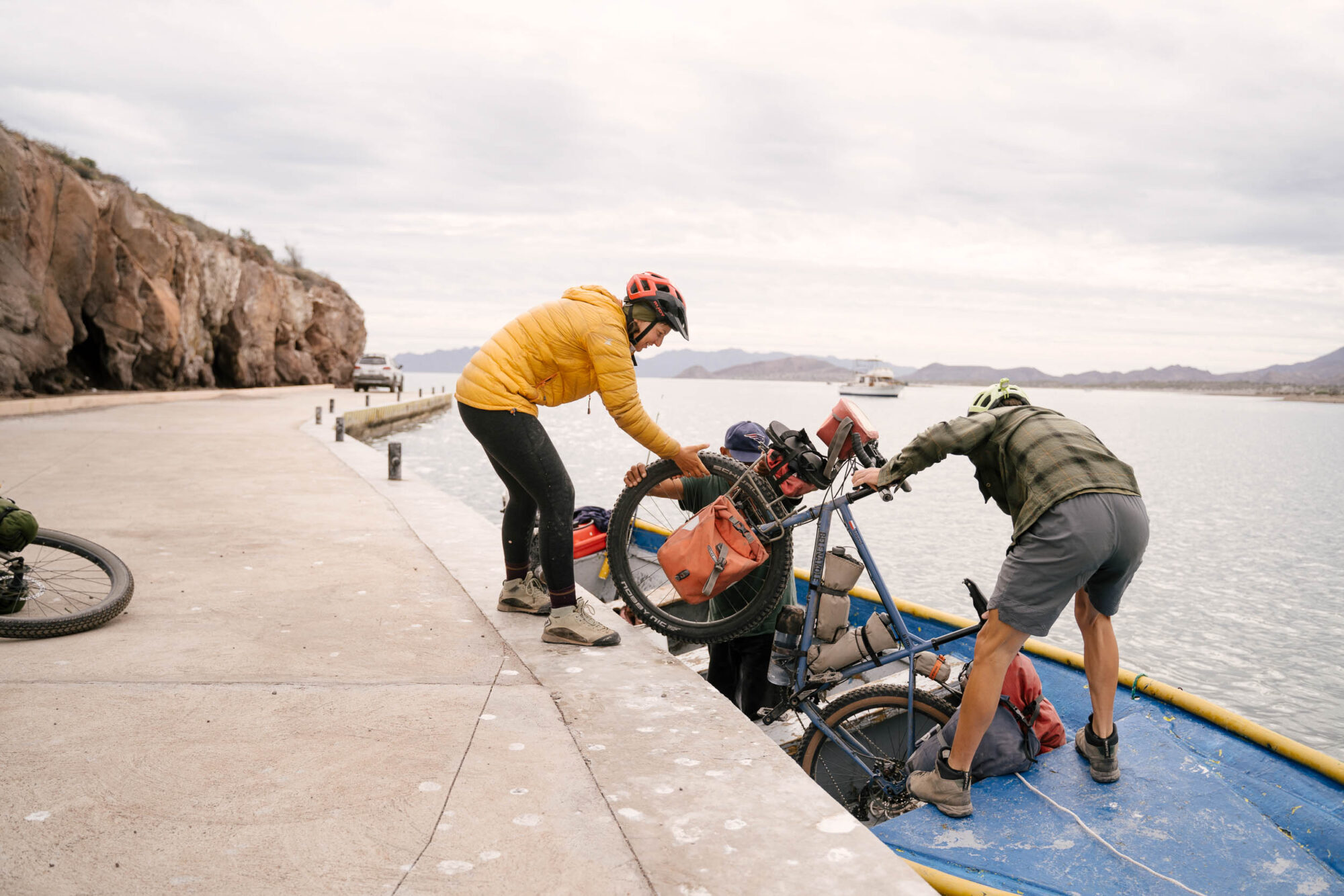
A few weeks later, as my time with Bo was coming to a close, a semi full of recycling sat parked at the roadside. We were trying to hitchhike north, and after a few hours of failed thumbing, the man in the semi walked over and invited us in. It was an old truck with a duct-taped side mirror and exposed, fraying cables. The spare tire was missing, and Bo strapped her bike to the tray it used to sit in. Cigarette smoke hung in the cab, and the odometer on the dash read almost a million miles. We climbed in and sat for hours as it pounded the road, the air brake rumbling the earth beneath us, the hot engine heating up the musty cab. And as I lay in his bed, aware of both the danger and the speed and the steady drip of adrenaline keeping me on edge, I put my earbuds in and wrote a bit in my journal.
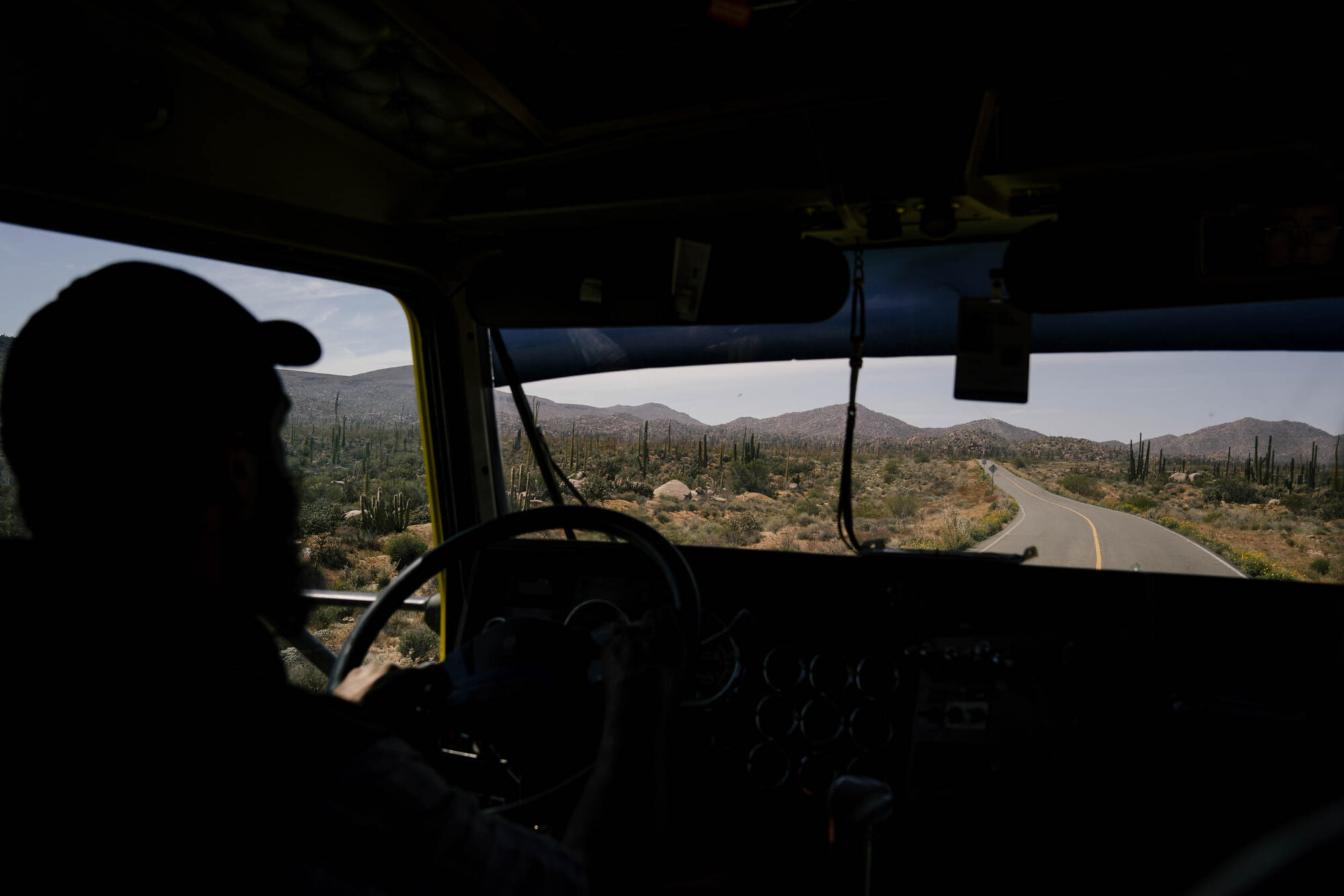
“What is this needle still doing, stuck in my arm, stuck there for the past three months, stuck pumping this drug that keeps turning everything to flames? Is this why I can’t stop crying? Is this stupid thing why nothing feels the same anymore? This thing, this drug, this addiction… it’s all freedom.
Bikepacking out here is wrestling a tent down in the wind. It’s a sweaty butt and a lurching stomach on a truckstop toilet. It’s sand and sun and hot and bleak. But bikepacking is freedom. I choose this life because there is nothing more liberating to me than two sweat-stained T-shirts, a camera, and a gasoline stove strapped onto a bicycle. Freedom exists here, in the back of a Mexican truckers’ cab, with our bikes strapped to the trailer, a few hours until the border, and the ability to leave whenever we want.
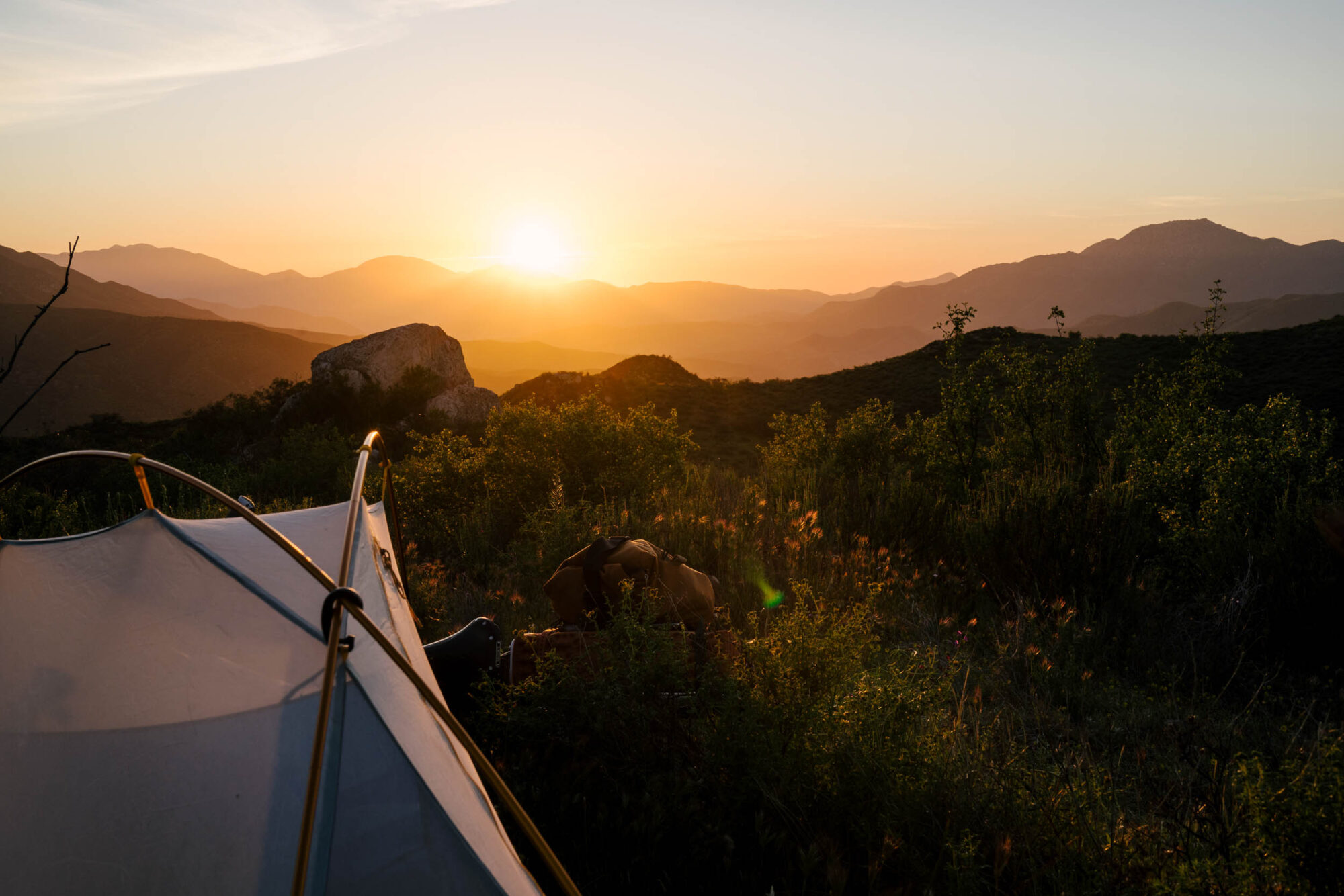
I’m here because freedom is a drug. It’s been promised to me all my life. But it’s always been a lie. There is no freedom seatbelted into a car stuck in traffic. There is no freedom in a 37-year mortgage. Freedom is the desert. It’s the ability to hike to that cave up in the hills, sleep under that cacti just there, lie naked in the sun for hours, and see what that town might be like tonight. Freedom is an old cardboard TV box and a roll of duct tape and an airplane ticket to the other side of the world. Freedom is why all the shit is worth pushing through. And freedom is easily the best drug I’ve ever done.
Riding across the desert, we are the cowboys of this bygone, hybrid modern generation. We are the ones selectively benefiting from technology. Let me take what convenience it gives and supplement it with the analog, with the real, with those wonderful, silly plants and this sunshine that never stops. So, I’ll ride with my phone in my bag and turned off but ready to tell me where the next water is, what shelter may lie ahead, and what I need to know. We are drifters with our bags half full and the open road forever ahead. Those bikepackers riding to Argentina are the materialization of the human condition within all of us that will never stop screaming: run.
I think back to my first night in Baja, and I see how this project was set in motion. I sat at a barbecue restaurant in central La Paz with Shea, who had just tore through the Divide solo, and her friend she met while riding south. He was on a motorcycle, riding in his own pursuit of self-discovery. He lost his job this past year, just after his wife walked out on him. He was battling intensely with depression, and in a last-ditch move, he sold his house and came down to Baja, hoping to push on to Argentina. I listened intently, quietly, and glanced over at Shea. She nodded in agreement as he pleaded with the skeletons in his closet. I asked her if she’s been in that same position before. “Of course I’ve been depressed,” Shea cut in. “Why do you think I’m here?”
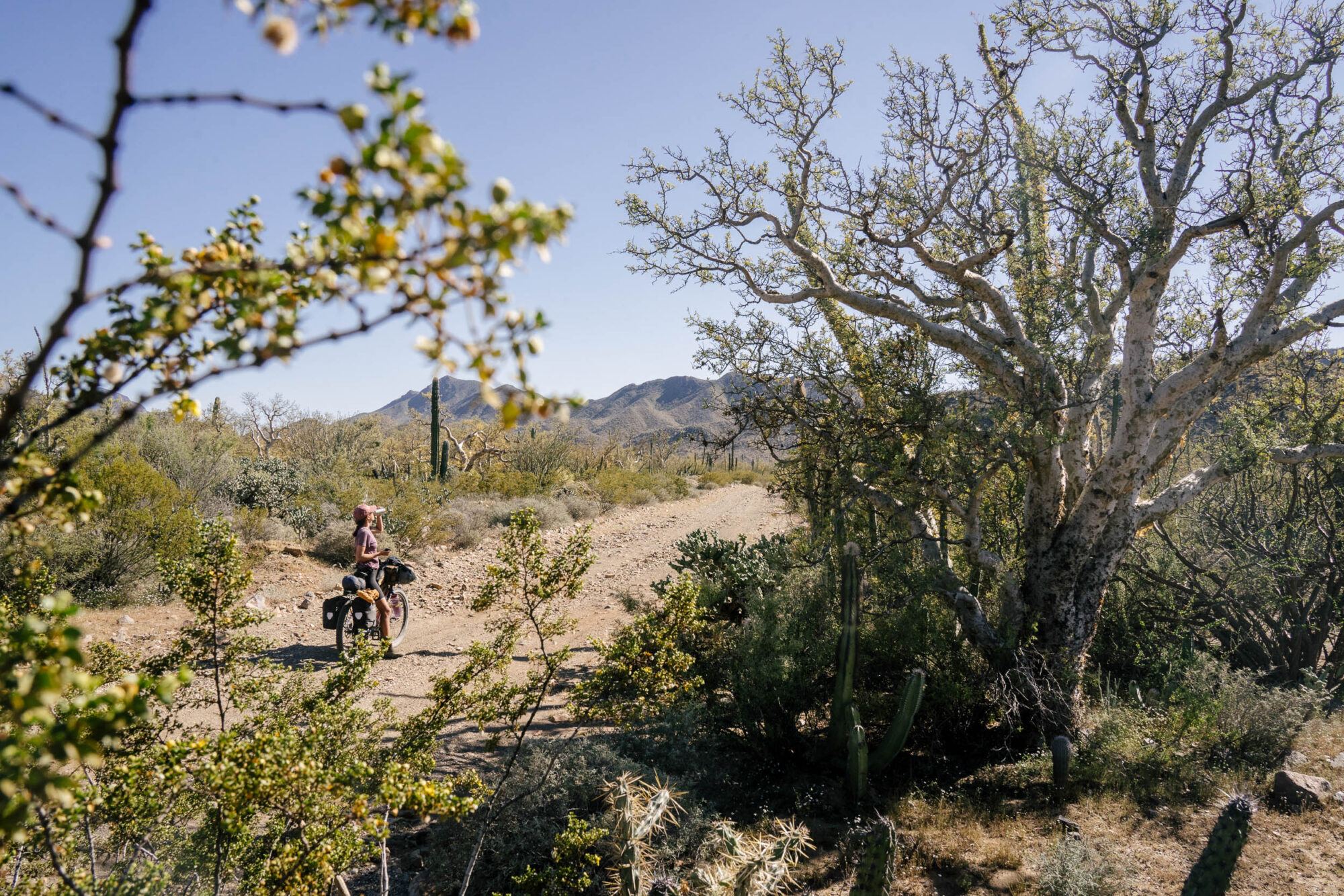
Why are either of us here? We all go on this epic hunt searching for something. And in the quiet desolation of this desert, we hope to fill those voids embossed in our souls from the days we couldn’t control, when it all went so horribly wrong. Here, we just resupply and ride. We’re in control of our own small universes, of our dry chains and empty water bottles. Our “to-do” lists are short, and our “to-see” lists are infinite. On the Divide, the burdens of existence are both heightened and narrowed. And for me, despite the grunting and the aching, the Baja Divide is the easiest few months I have in the rearview or ahead. It’s only here I feel a definitive purpose. Lately, it’s only here that I can just be.
Somehow, I feel like we all identify with this. Baja Dividers are all misfits in some way. Everyone I’ve met along the road, 76 riders in total, instantly clicked in some regard. We all shared things so openly and so fast. I think back to what Dave said early on. We sat there, him and his partner DeAnne, sharing a meal in a fancy vacation home we all lucked our way into for a night. We eagerly dug into all that we shared in common, instantly becoming friends.
DeAnne’s transition from road racing to bike touring paralleled so much of my own story, and our common appreciation for the wilderness down here was a topic we returned to constantly that evening. Dave leaned back and sipped his cocktail, a cold glass of green juice and tequila, and quietly said, “Yeah… there’s a large denominator here. Like, it means a lot more to be a bikepacker than most other… hobbies.”
Bikepackers are probably more tightly interwoven than the average Sunday dog-walking group. But I think Dave was also aware that “hobby” is a weird word for what we’re doing here. It’s not like this route is another knitting project lying dormant in the basket. But this seems to be the best way for Dave to explain to himself the choice he made in coming down here. The word hobby is saying to himself during the hardest sections of the route, when the scree is loose, and the sun is strong, and the pitches are steep, “I chose to do this.”
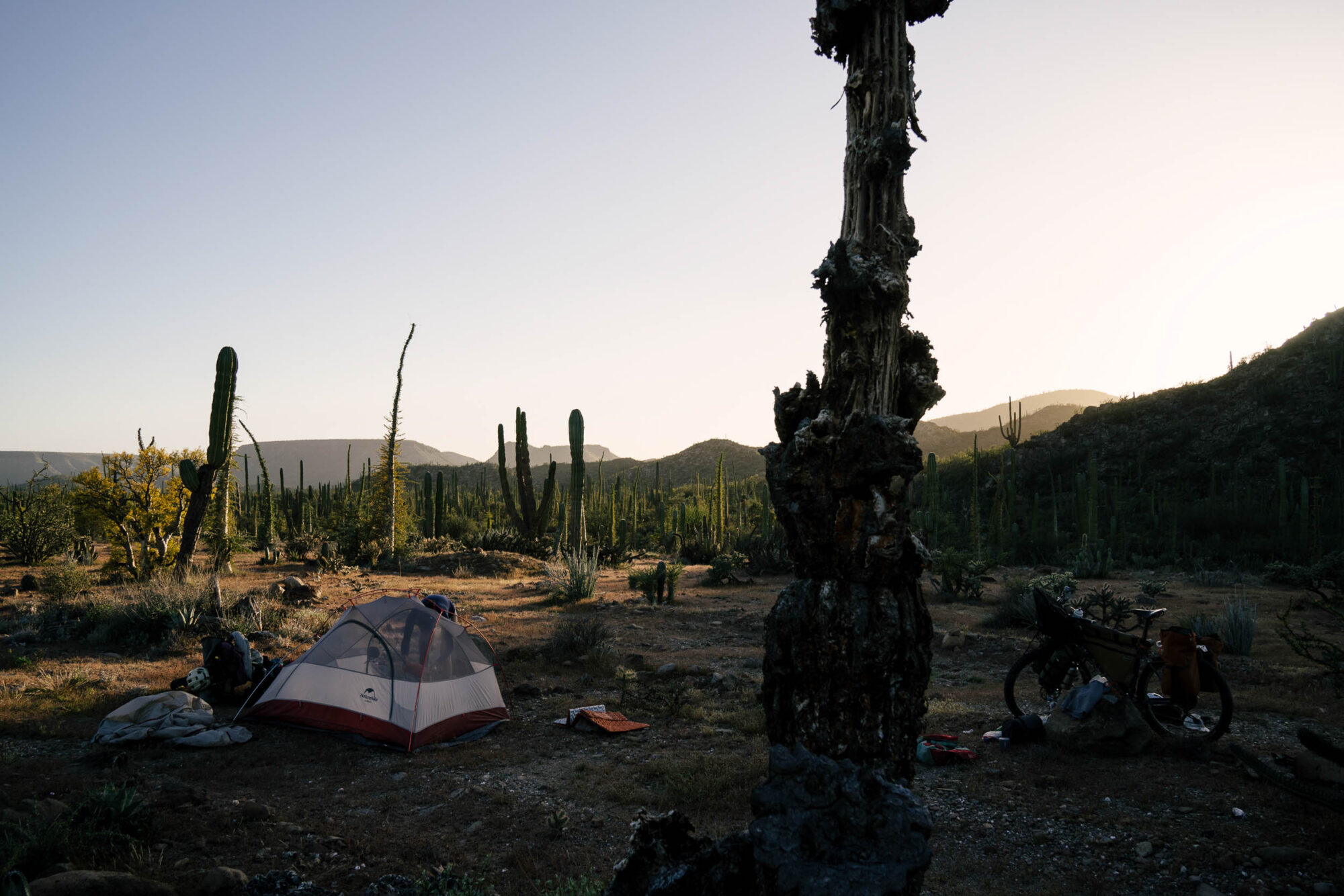
We all have to reckon with that thought at some point. We all knowingly put ourselves in these precarious places, four days away from civilization, with no cell service, and only using the lowly, silly bicycle. To the guys blowing by on $20,000, 200-horsepower adventure motorcycles, we must look so dumb.
One day, I was sitting alone, eating my tortillas and beans, and a guy on one of those bikes pulled over and whipped his helmet off, and just yelled at me, “And I thought what I was doing was crazy! What the hell are you doing out here!?” I didn’t really know how to answer that question. “Just riding my bike,” I supposed, looking for a simple answer, half joking with the guy. But the reality was so much more complicated than that. What the hell was I doing out there? How do I tell this guy, who’s three hours from a place that will take me two more days to get to, that I think this bicycle is actually the better way to get around Baja, and the world too, for that matter. How do I explain that this slow, analog bike, and these bumpy, torn-up roads are my ploy for happiness? How do I say I’m on a metaphysical journey that just looks on the outside like a bicycle ride, and not sound completely out of my mind?
As the ride dragged to a close, as the landscape changed, as it slowly began to feel like home again, I thought of what this time away meant. I thought back to my two days spent riding with Dawid and Magda, two Polish riders going to Argentina. They had already ridden some 15,000 miles together by the time we crossed the Bay of Concepcion and pedaled down the remote ear of the peninsula together. The two were tired. Exhausted from an overwhelming year on the road.
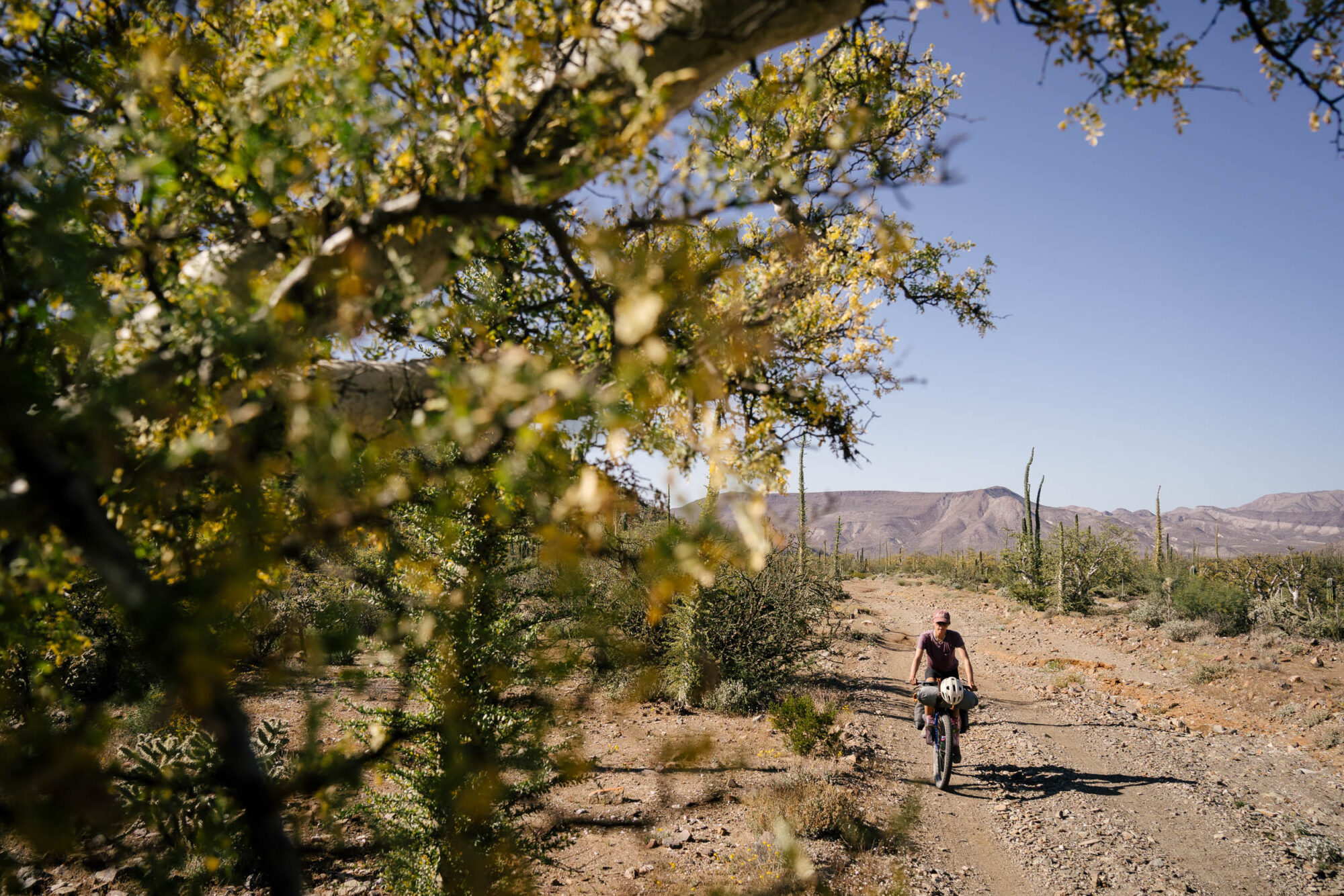
Together, we sat huddled around a small fire, and they reflected back on their never-ending year together. Dawid said before they left, he felt pretty apathetic about his homeland. “I thought, mehhh, it’s just Poland.” He even stuck his tongue out and shrugged. But as we sat there together, the evening wind picking up, the light rain beginning to fall, the gentle lapping of the bay against the hard rocks and soggy driftwood, Dawid looked into our small fire with his gushing soft eyes and said, “But now I think… it’s… Poland. It’s soo beautiful there.” And he held his hands out as if embracing his memories of home.
His time on the road has taught him one thing most of all. That home is a special place, and its uniqueness is something to cherish. Dawid and Magda said it’s been stressful traveling this past year with the Ukrainian invasion just miles down the road. They’re nervous to return to it. But they now feel more inspired to travel through their own country, something they haven’t really done before, just like they travel through Mexico now, curious drifters with nothing more than their eight panniers clattering away down the road. They’re cutting their ride to Argentina short for now, and they seemed perfectly happy to do so. Dawid and Magda abided by only the rules they set out for themselves along the way, bending them to the shrill cries of the wind through their heartstrings. Home beckoned for them, and so home they were going.
With only a few days left to go, I found myself staring at the map and its sharp delineations once it turns into San Diego. I, too, began to obsess over home. I saw the rats’ nest of freeway lines, the familiar park names, and the trails I’ll probably take. I pushed on, feeling comforted by knowing this route stretches right out of my own backyard and will continue to do so forever. It will always be there, subtly bending to the will of its people, and always ready for me to return and prod around again.
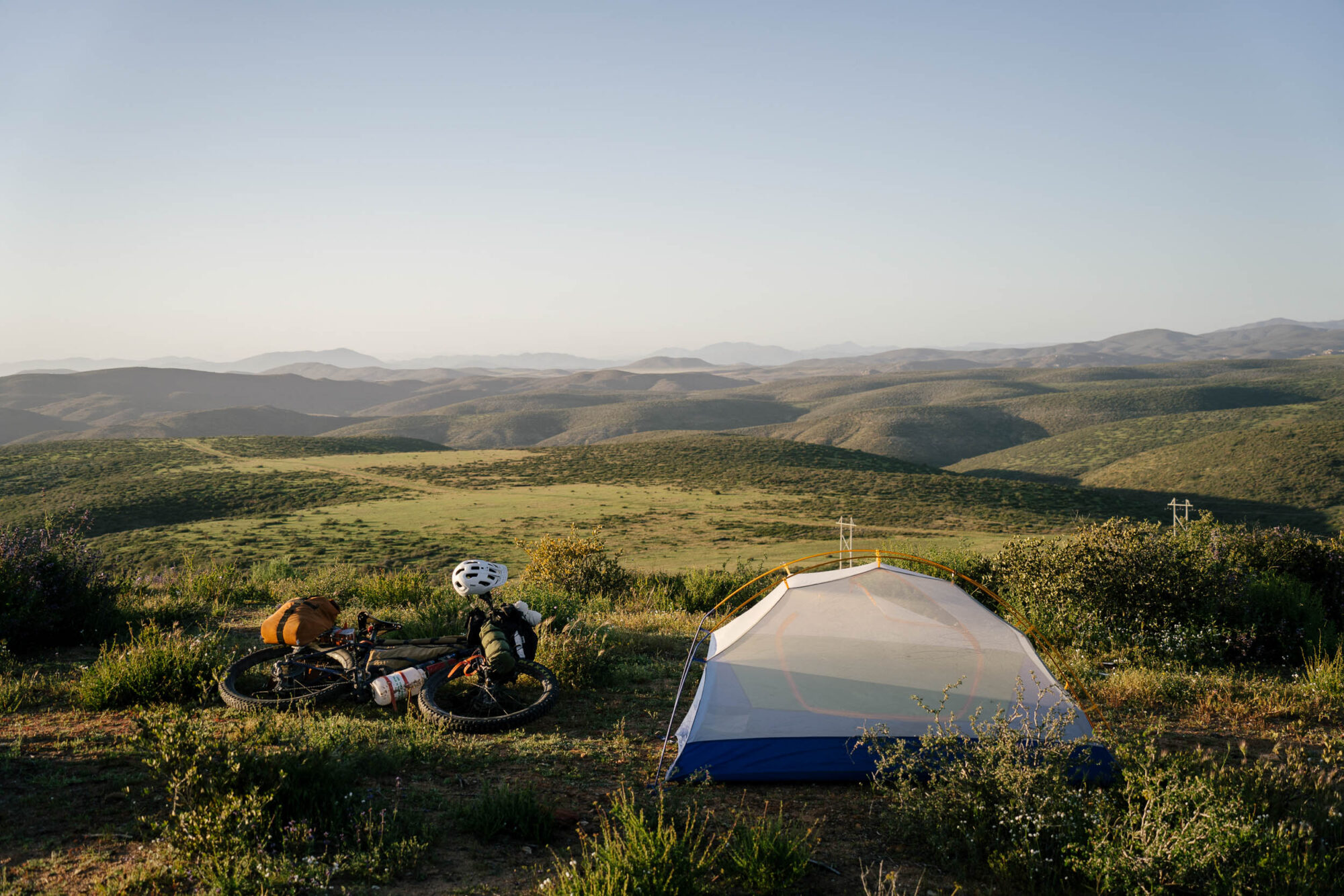
But, somehow, with some arbitrary connection of lines, it connects to your backyard too. You could leave tomorrow and ride there. Or you could go the other direction. To Alaska. Or somewhere beyond the ocean. Whatever your Baja is, it’s there now, and it always will be. And today, these same wilderness areas are there, existing in their naive bliss, not exactly waiting for you, but open.
But I will still warn you. There is no escaping Baja once you enter. There is no Indian food, no fancy cafe on the corner, no grassy neighborhood park. Baja is unapologetically itself. Baja is the friend that cusses in front of your parents and burps while shaking their hand. It’s rude, it’s mean, and it can be flat-out ugly at times. The light will cut through the morning haze and into your tent, and it will shake you into yet another day of pedaling. Another day? you’ll groan.
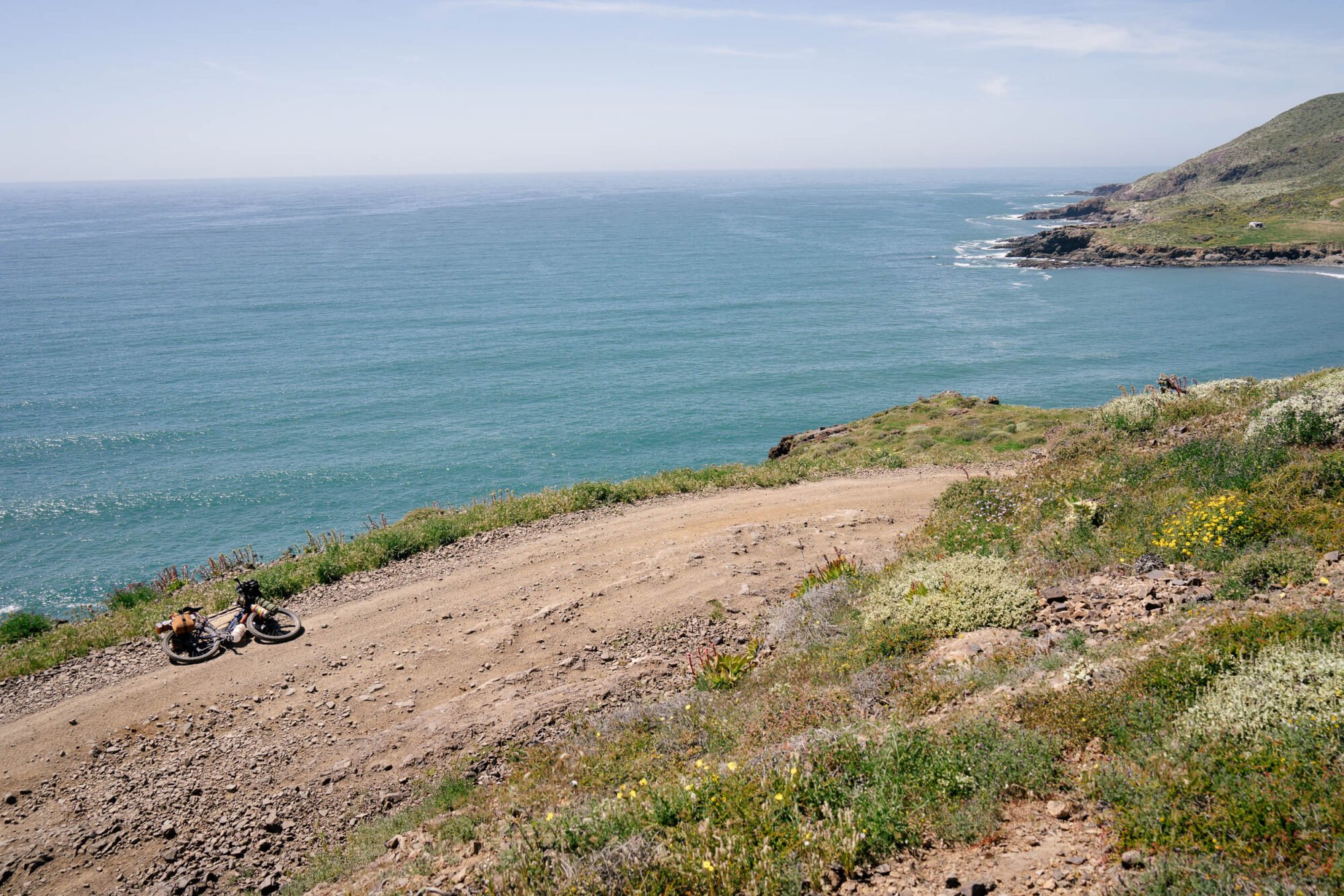
You’ll be so tired down there, the tiredness soaked into the porous core of your bones, tired from the oil in your helmet hair down to the calluses in your feet. Tired of your stupid grips and stupid shoes and stupid saddle. But you’ll be tired and alive, tired and aware. Tired and frazzled and hopefully so mind-blowingly happy to pedal another day in this echo chamber of beauty. The Baja Divide is nothing like the rest of life in the rest of the world. And that is exactly why it’s worth doing.
Ultimately, although we follow the same line, the scope of this route, the drama of this peninsula, even just the sheer length of it all means we are certain not to have the same experiences. Some day, I wonder if the Divide will look like Mount Everest, with throngs of colored puffy jackets marching in step the whole way down, with specialized outfitters and guiding companies and all-inclusive packages. But, right now, it’s so far from that.
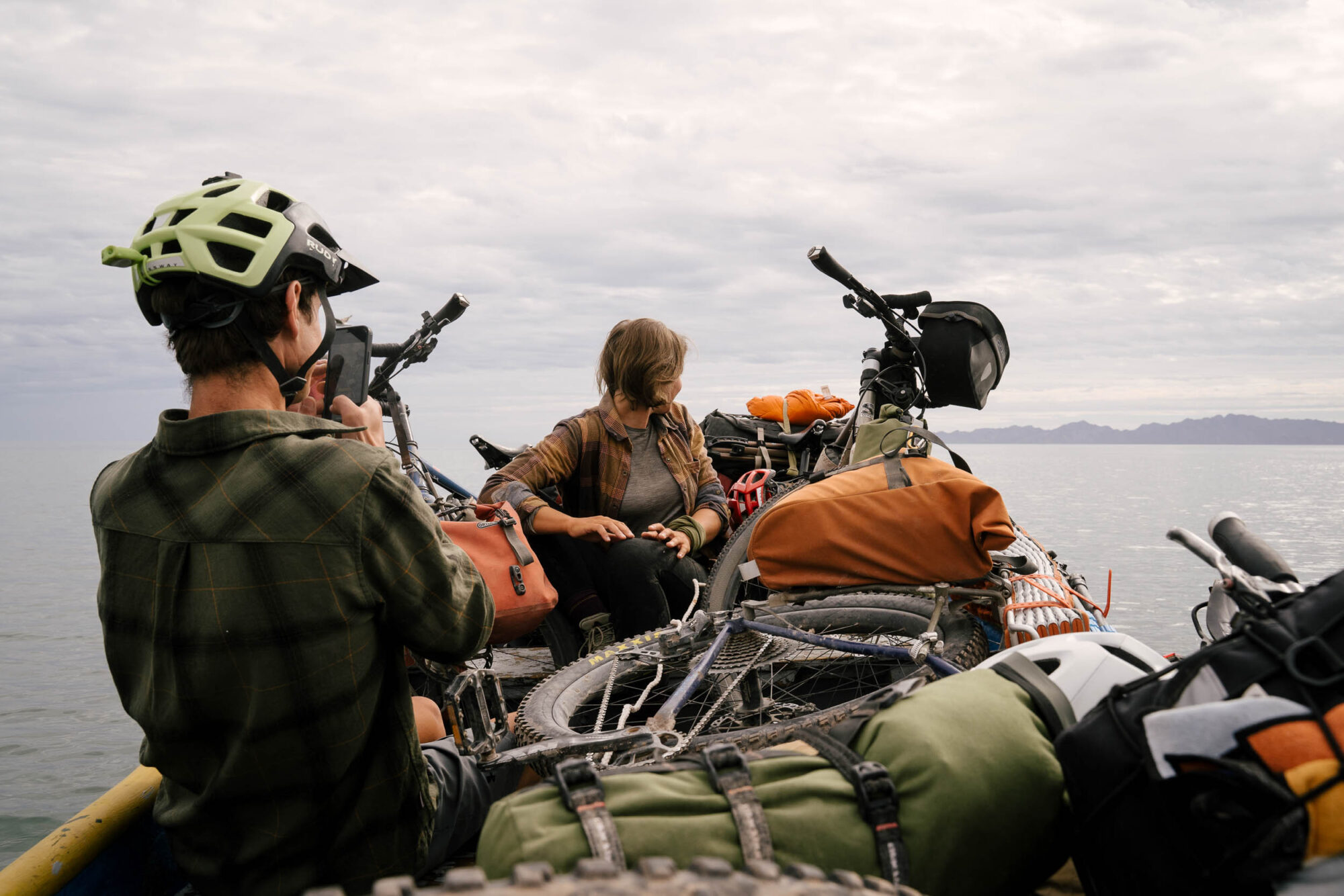
Toward the end of my ride, I’d go days without seeing anyone. This year, Salvador guesses he saw 200-300 riders in total, touching the peak of what it was before the pandemic. So many riders said that while heading south, they never even saw other bikepackers. So, sure, if you go down there, you’ll also meet Carmelo and Rosalina in the traverse to Mulege. You’ll maybe get invited to ride their horse too. But how that fits into your entire Baja narrative has yet to be decided. Just because we ride the same route doesn’t mean we have the same problems, the same sunsets, the same conversations.
I even heard of multiple people who were so miserable this year they bailed out less than halfway through. So much of this route is predetermined by your mental state whenever it all hits the fan. This route is nothing like leaving your driveway and flipping a coin at every intersection. Sure, every turn is already decided for you. But how do you fill the time in between? To me, that’s the interesting part.
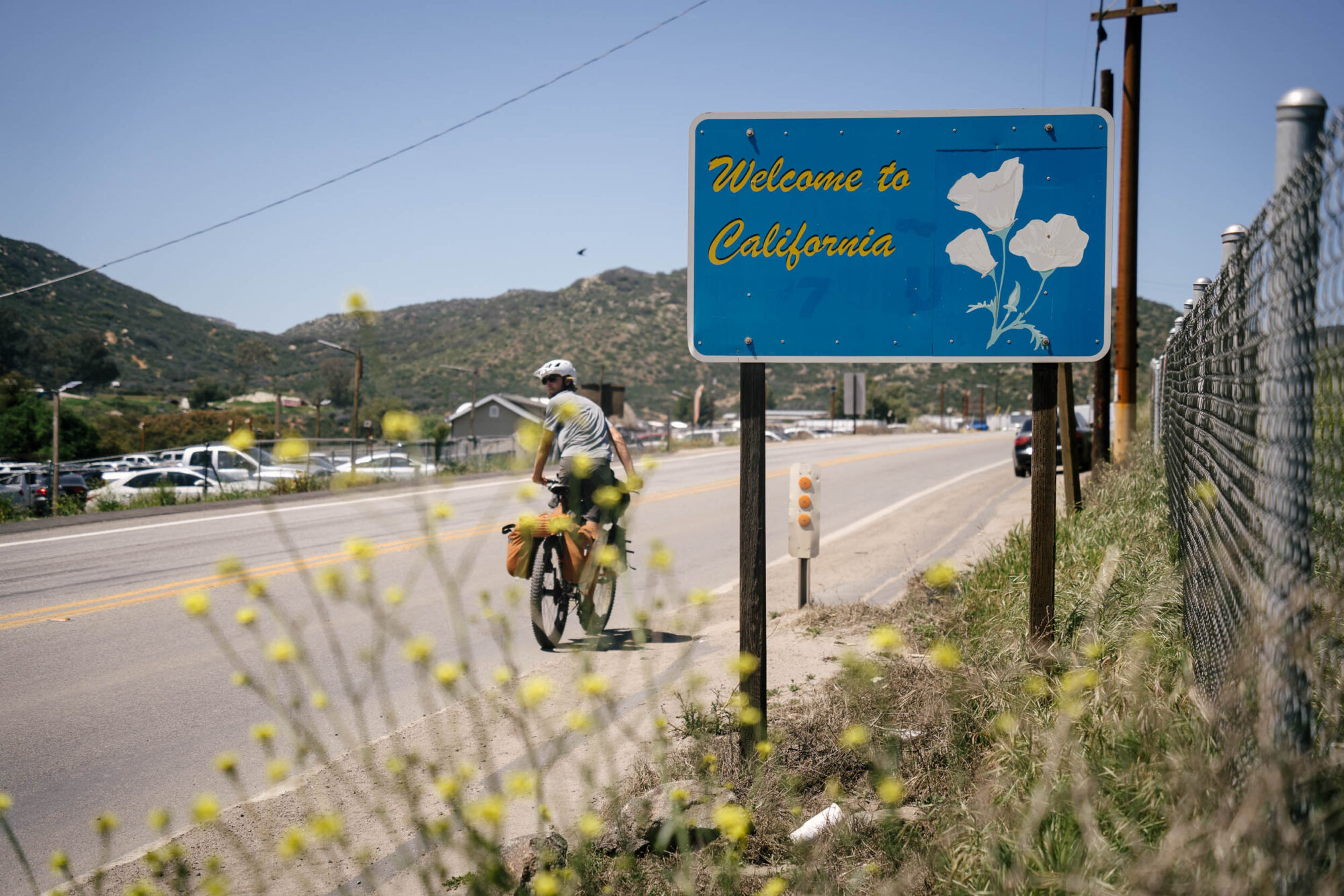
In a twisted and confusing way, there are two realities of the Divide. The cynic can see it as just a line on a map, as just a couple days of pedaling, just movement through the world. But the Baja Divide, if you open yourself up to it, is a truly wonderful thing. The route forces you to depend on the local culture. You will meet the ranchers, you will drink cold beer in a warm taqueria, you will have a funny interaction being offered to ride a horse in the backcountry. And you will also sit alone in silence in big and wild spaces, and stare at cacti, and intimately know the cycle of the moon. And, to me, that is the whole point of this thing.
Riding the Divide is a way to better yourself through the experience of a world, a culture, a landscape completely unlike your own. You can follow this line and let it lead you away from your addictions back home, or away from depression, or toward beautiful things in a desperate plea before you go blind. But, wherever it leads you, if you use it right, if you keep your head up and laugh at the misfortune that’s sure to find you along the way, the Baja Divide has the capacity to make you a better person. I want this world to be better. For heaven’s sake, we all do.

And sure, it may be asinine and trite, but I do think exercise and adventure and independence and meditation make us all into better people. And if we can all become better versions of ourselves, doesn’t this global suffering calm down a bit? Can this be a pathway to making it all a better place? “I want to go home and be more hospitable,” Justin said, remembering all the humbling interactions he had during his journey. What if we all underwent that same change? Where would we be then?
And so, finally, I got back to my own home. The neighbors had built a new fence. The grass had grown tall. The letters were unopened. Months had passed, and the world had moved on. So what are we doing, really? Maybe it is just following lines.
Related Content
Make sure to dig into these related articles for more info...
Please keep the conversation civil, constructive, and inclusive, or your comment will be removed.












